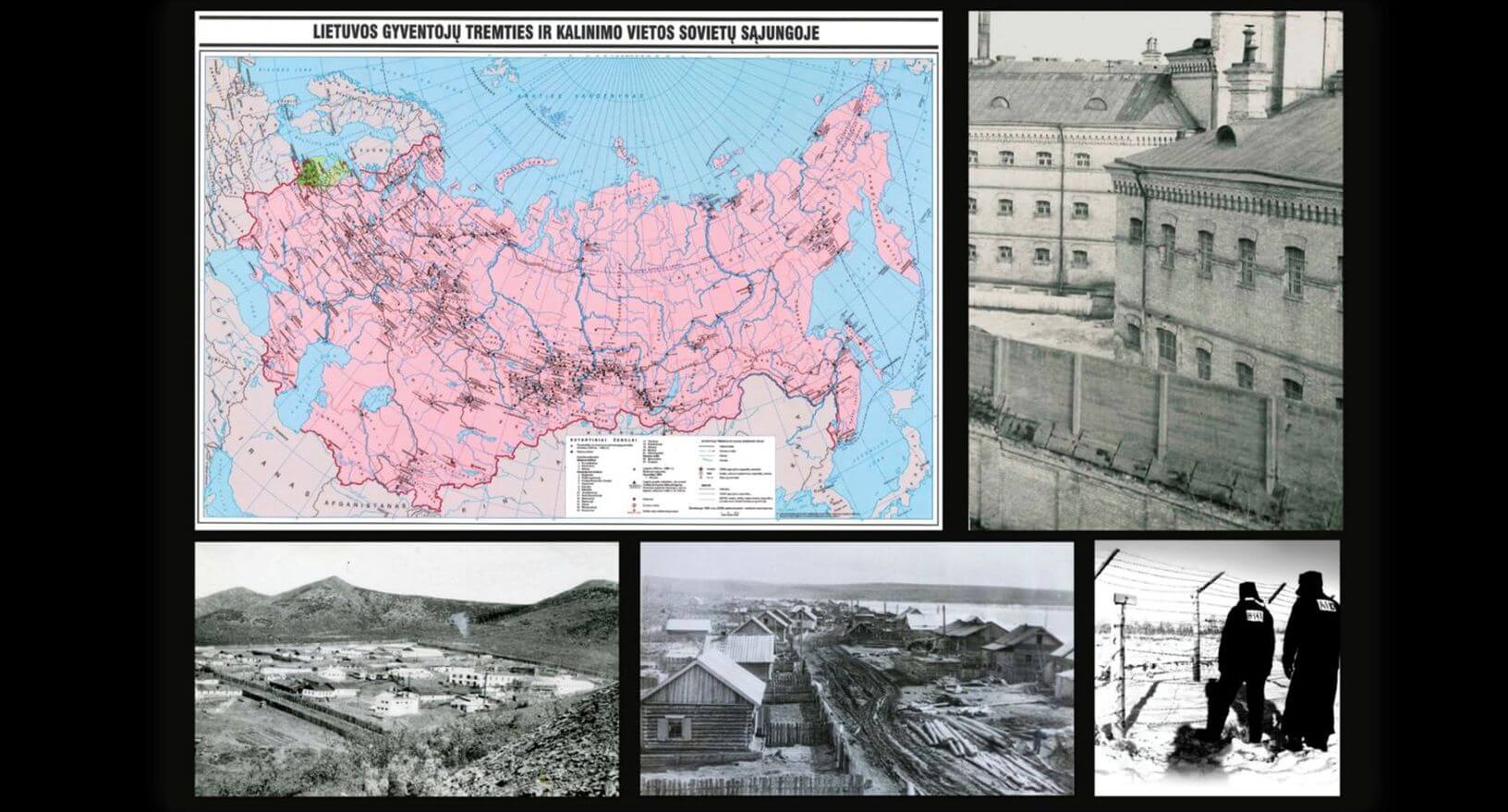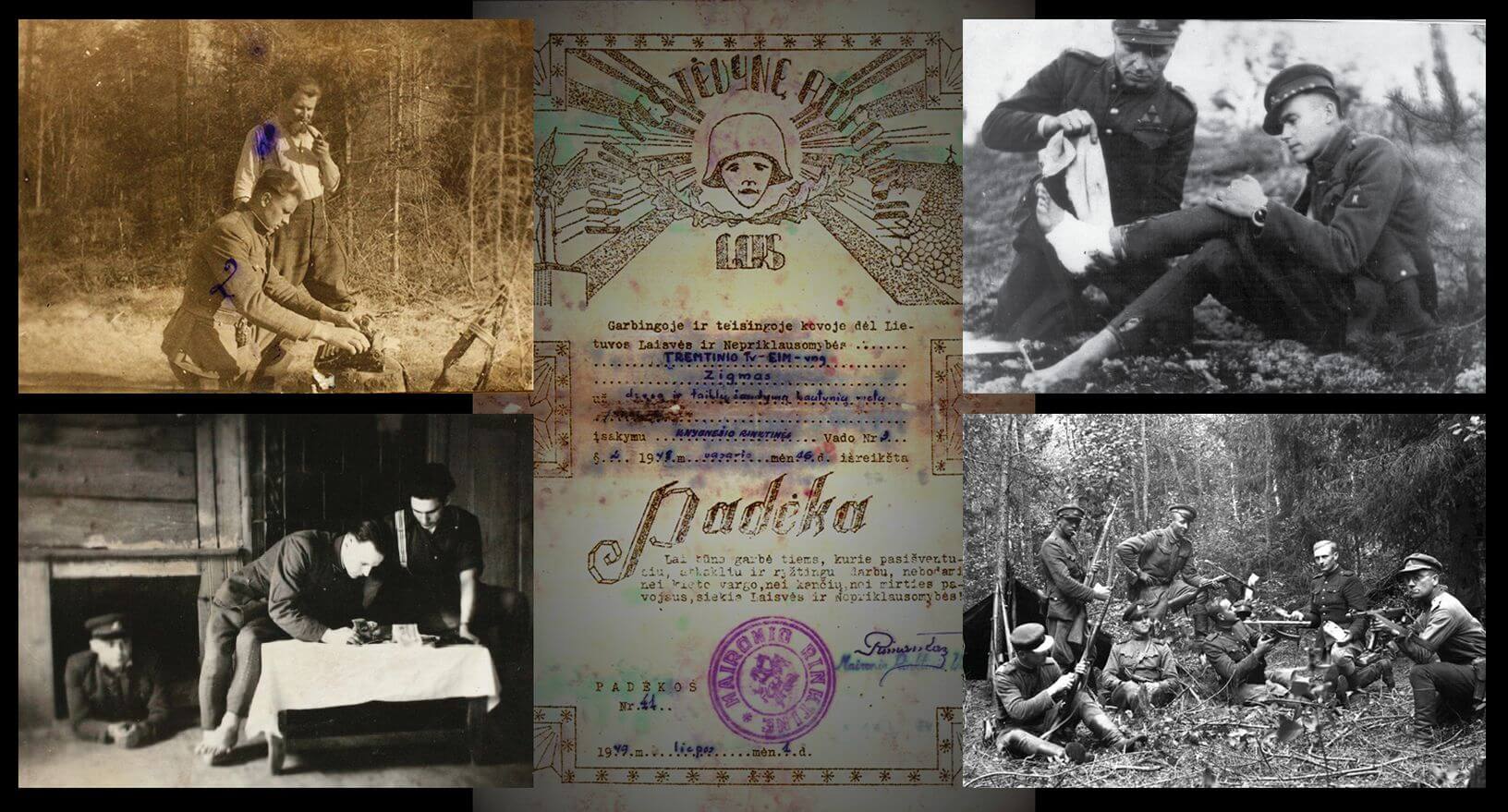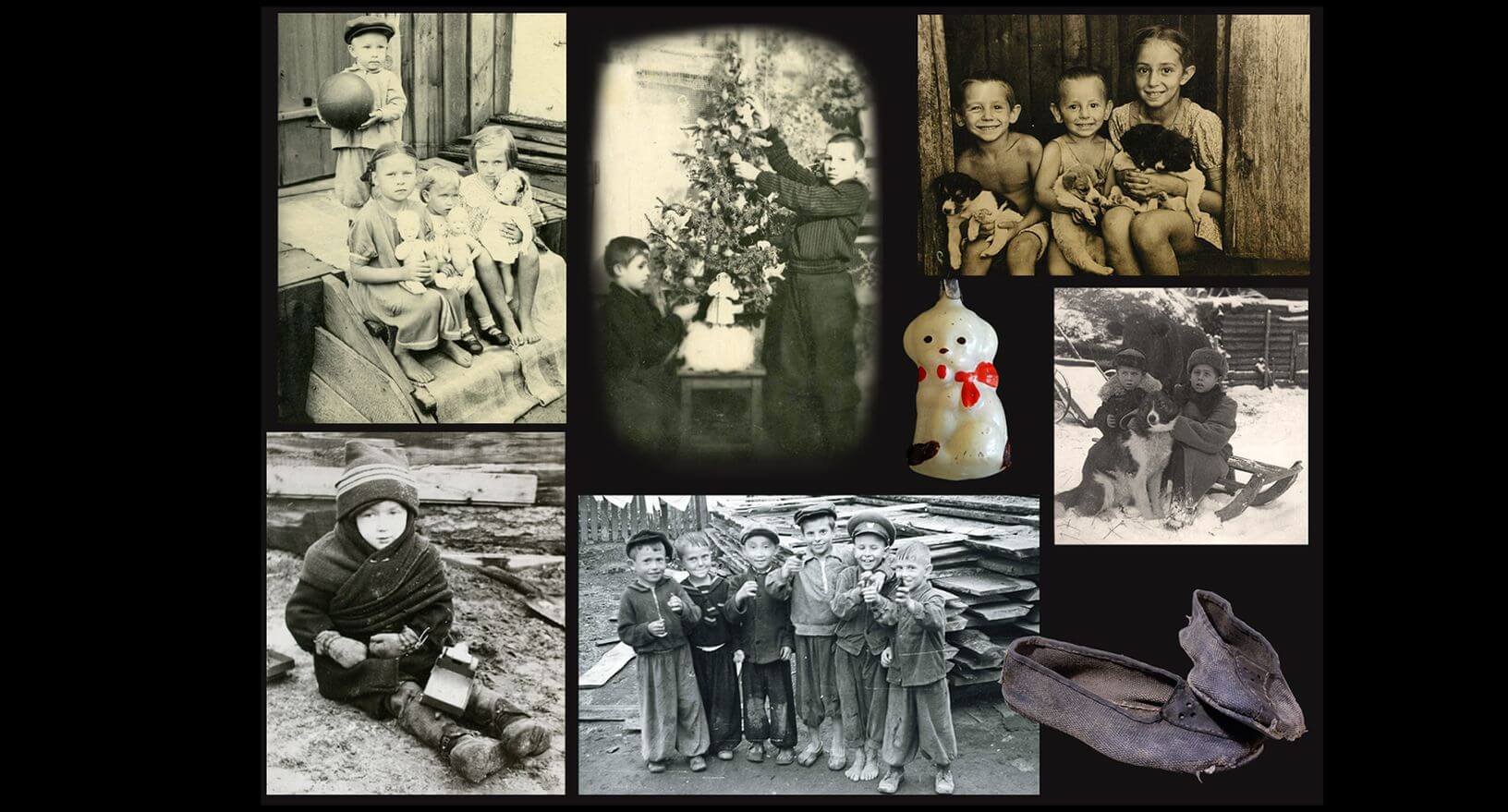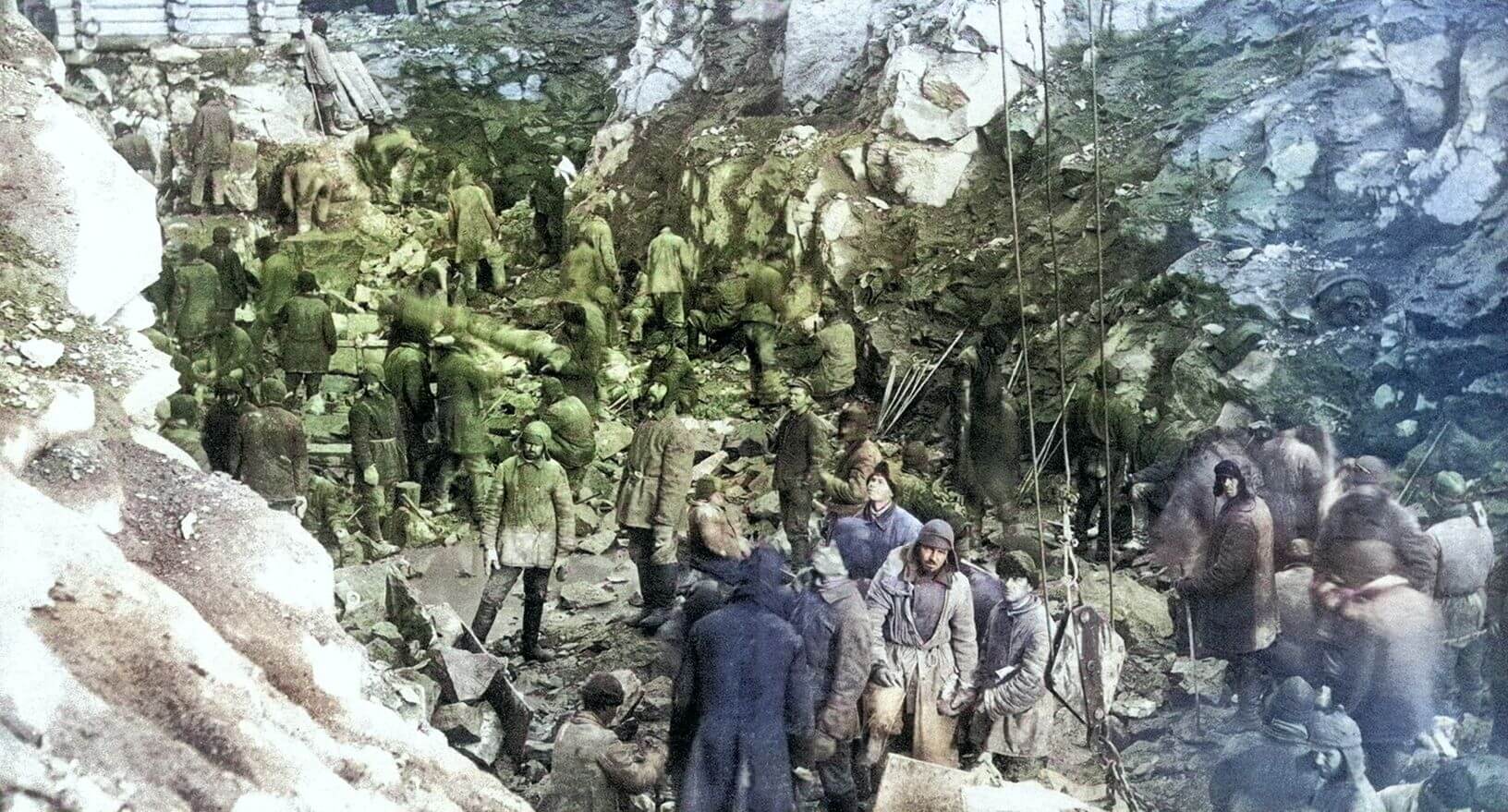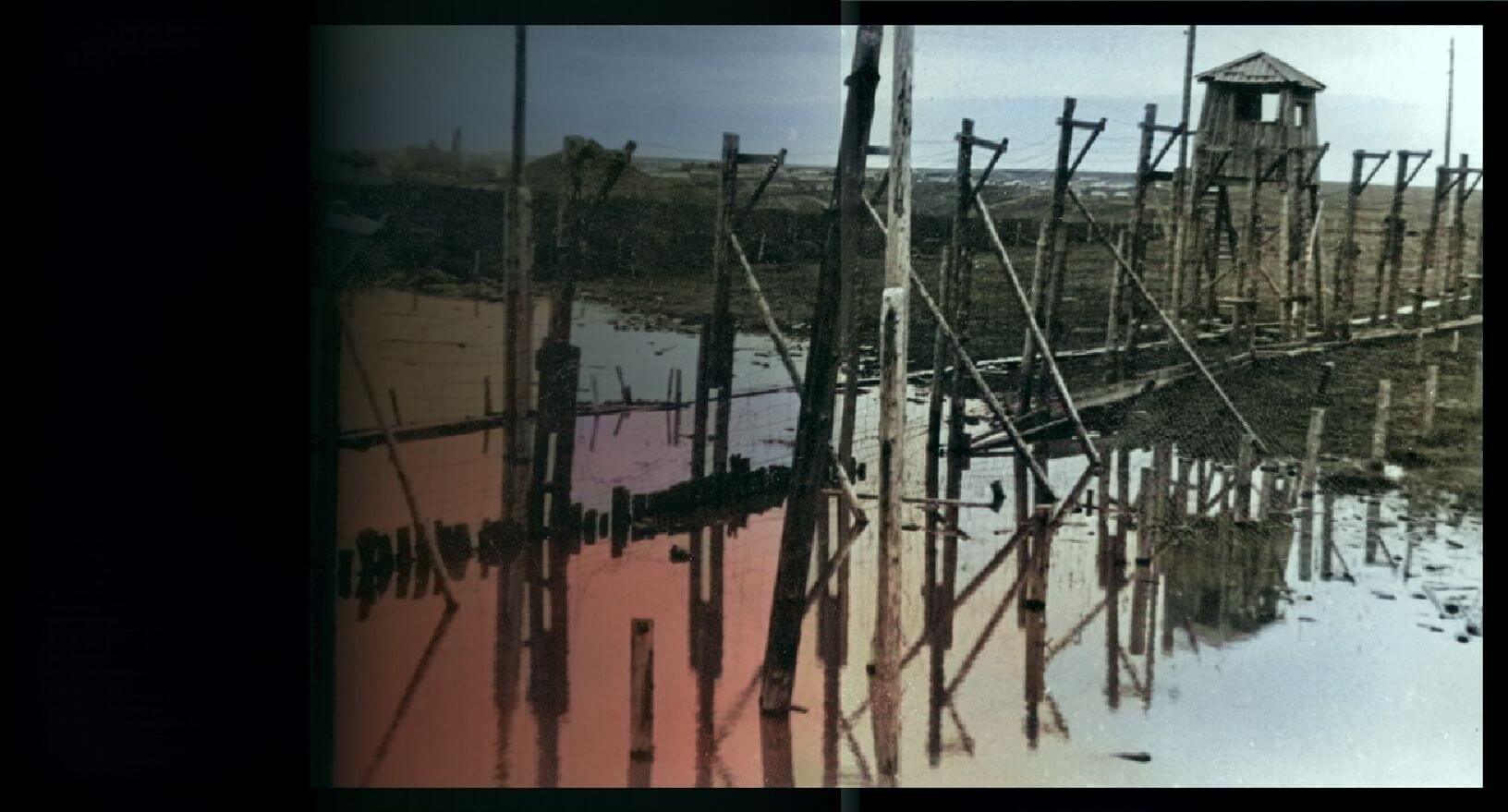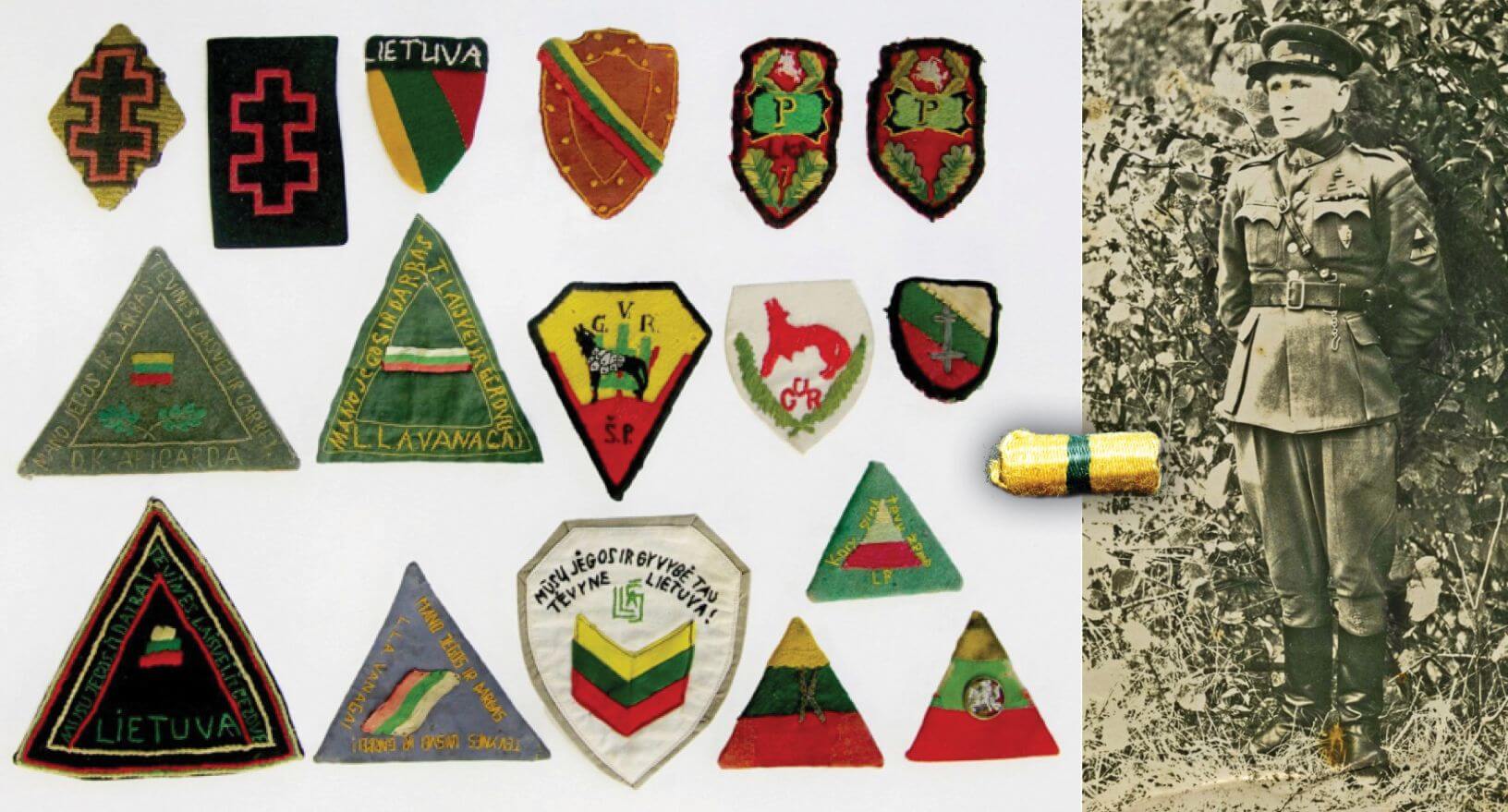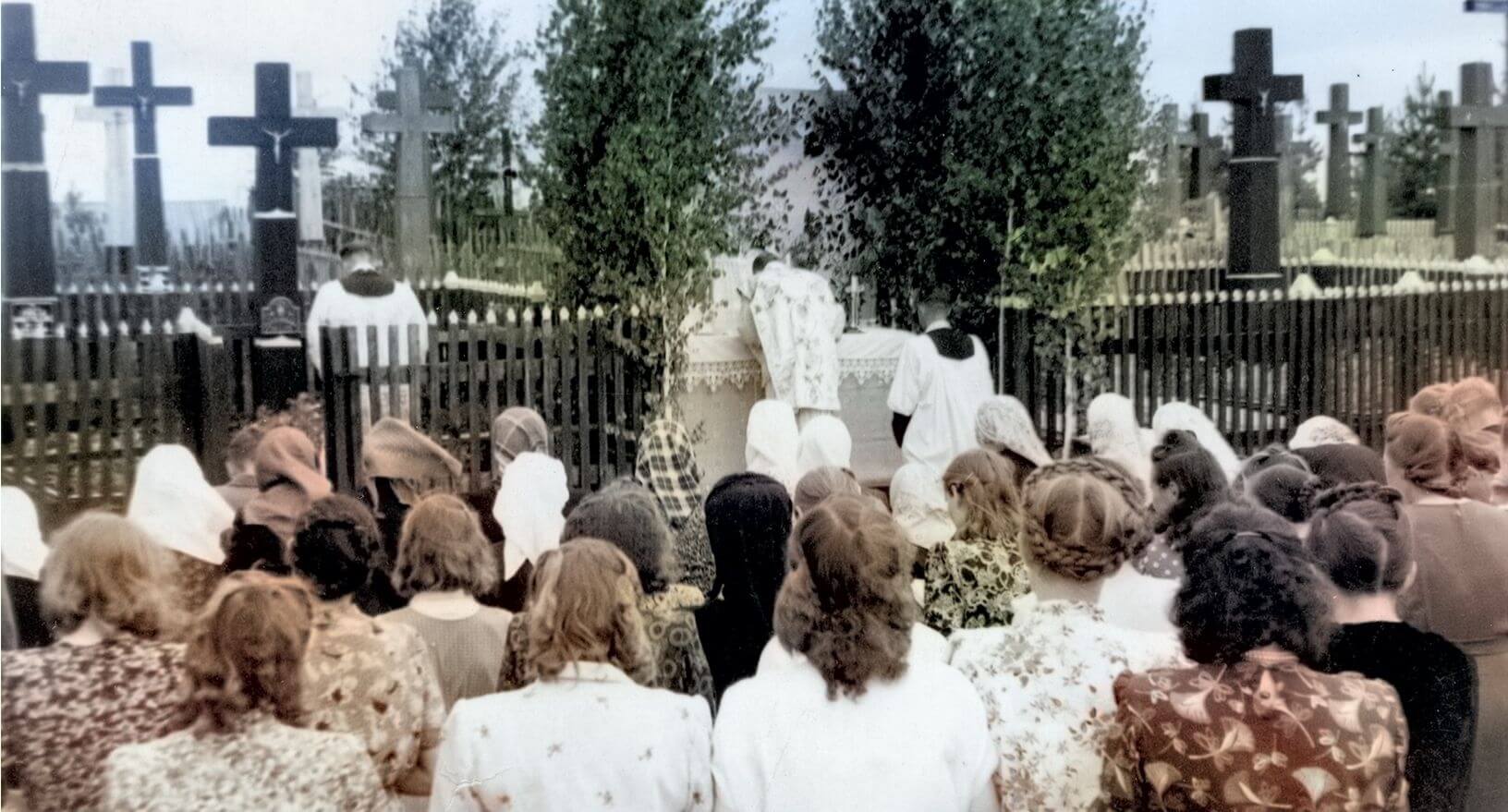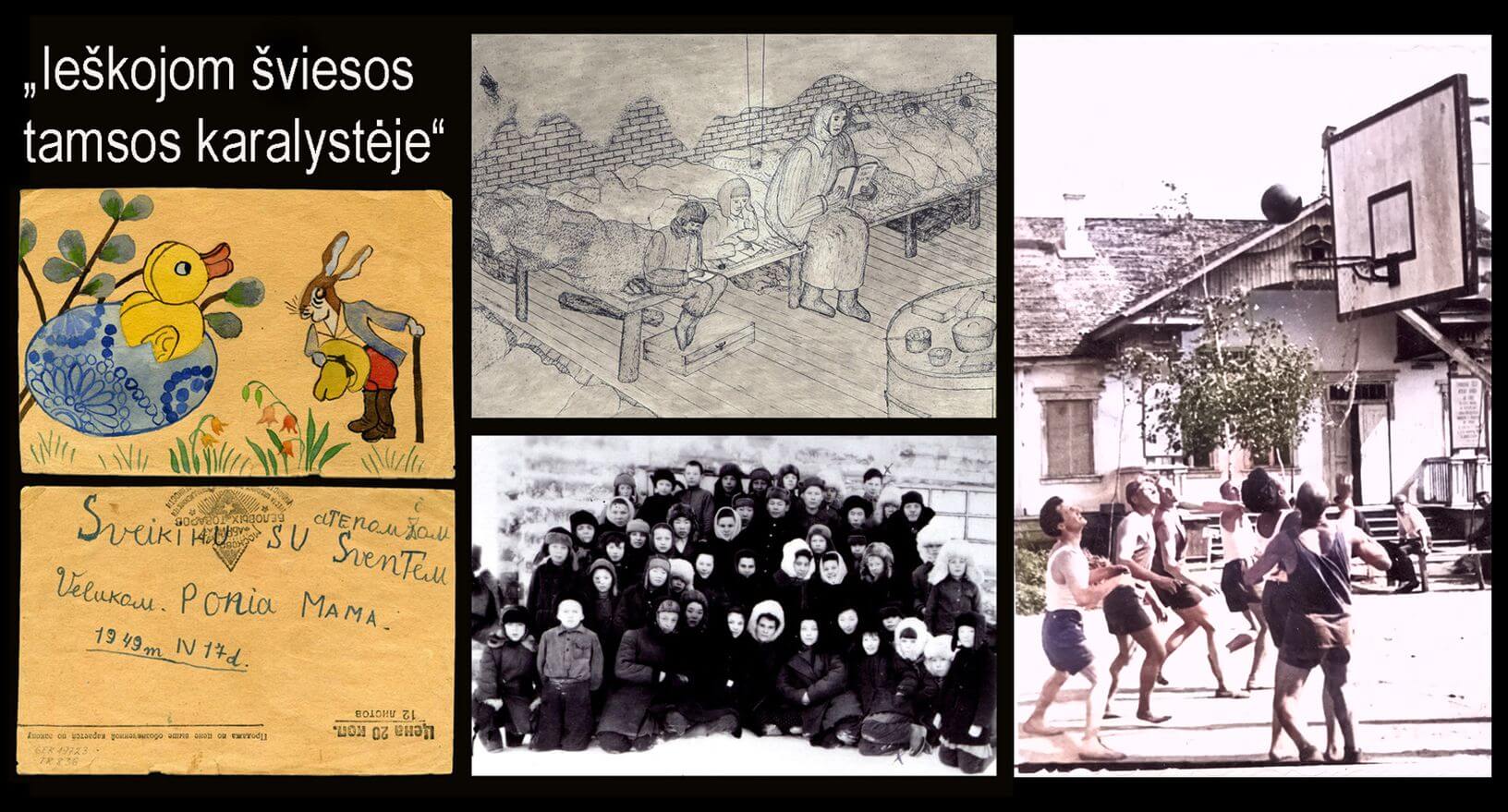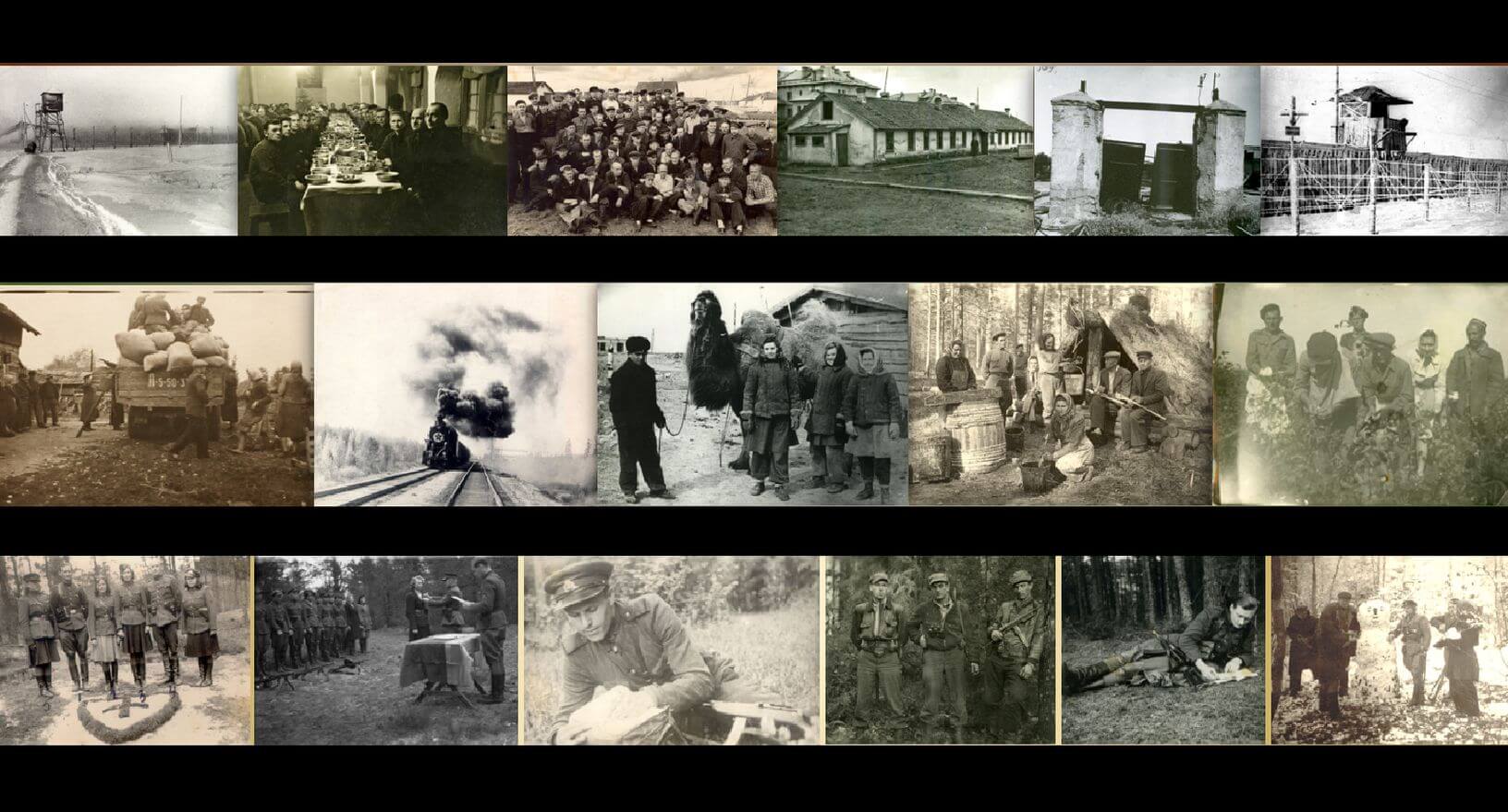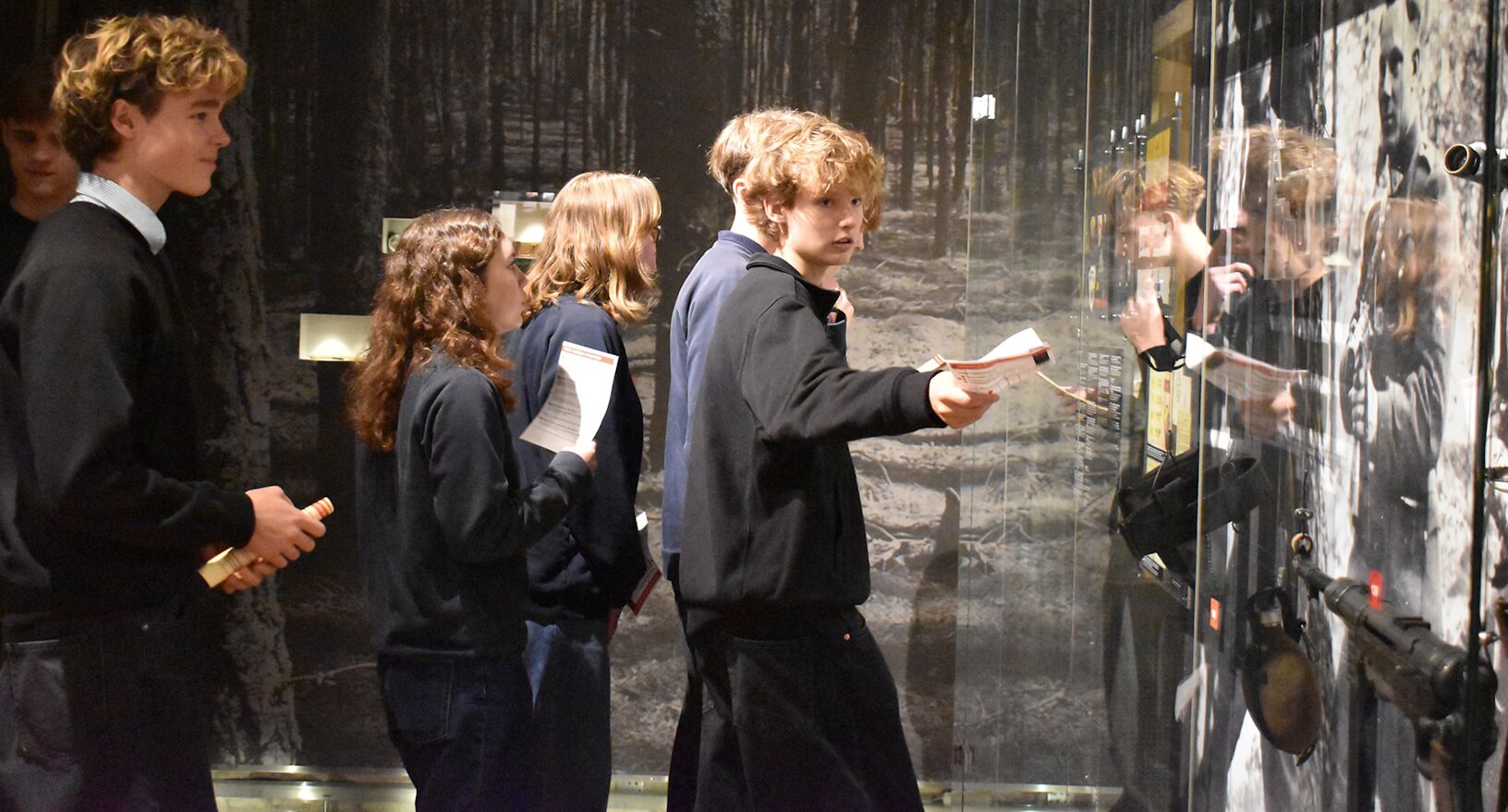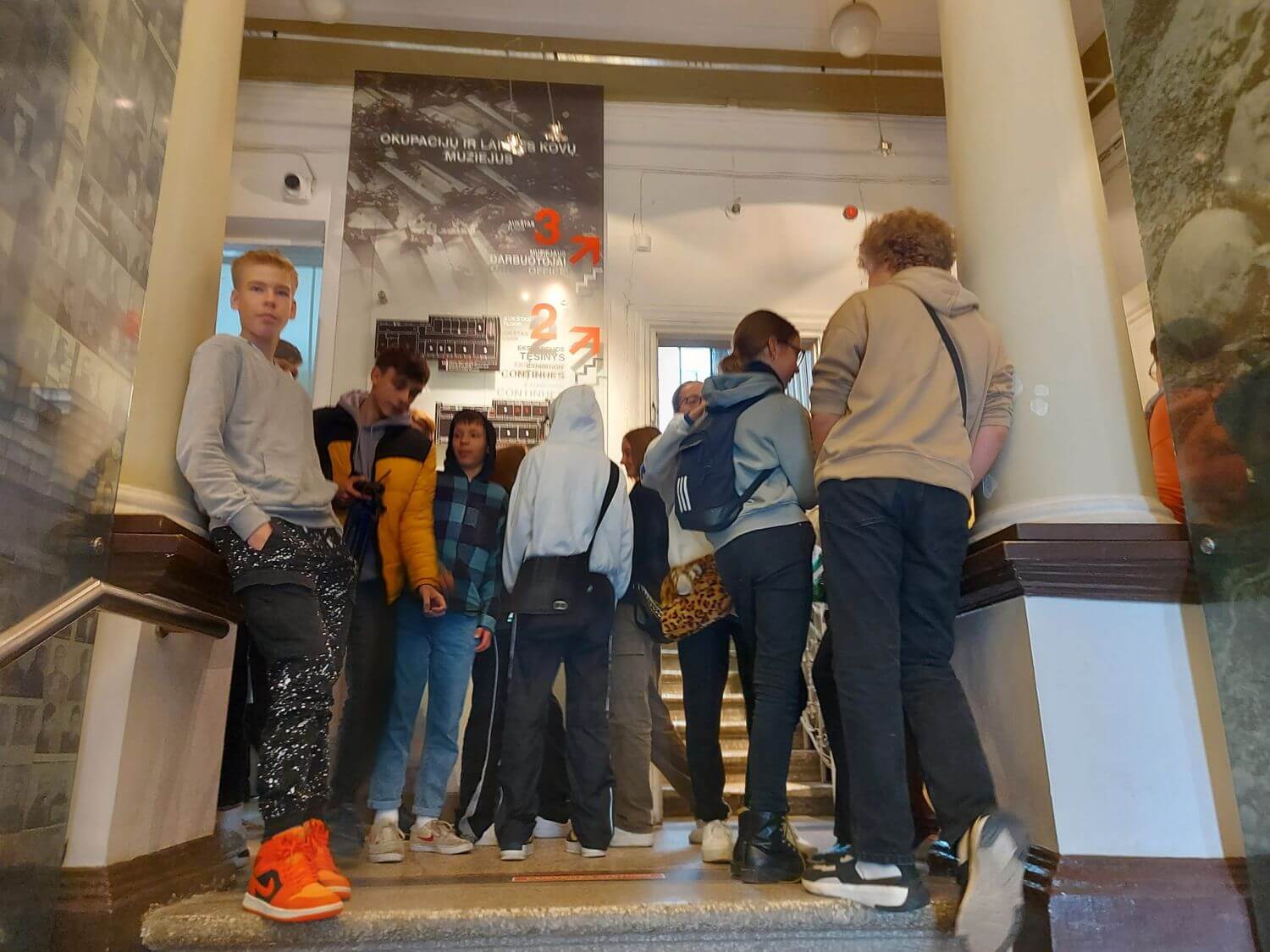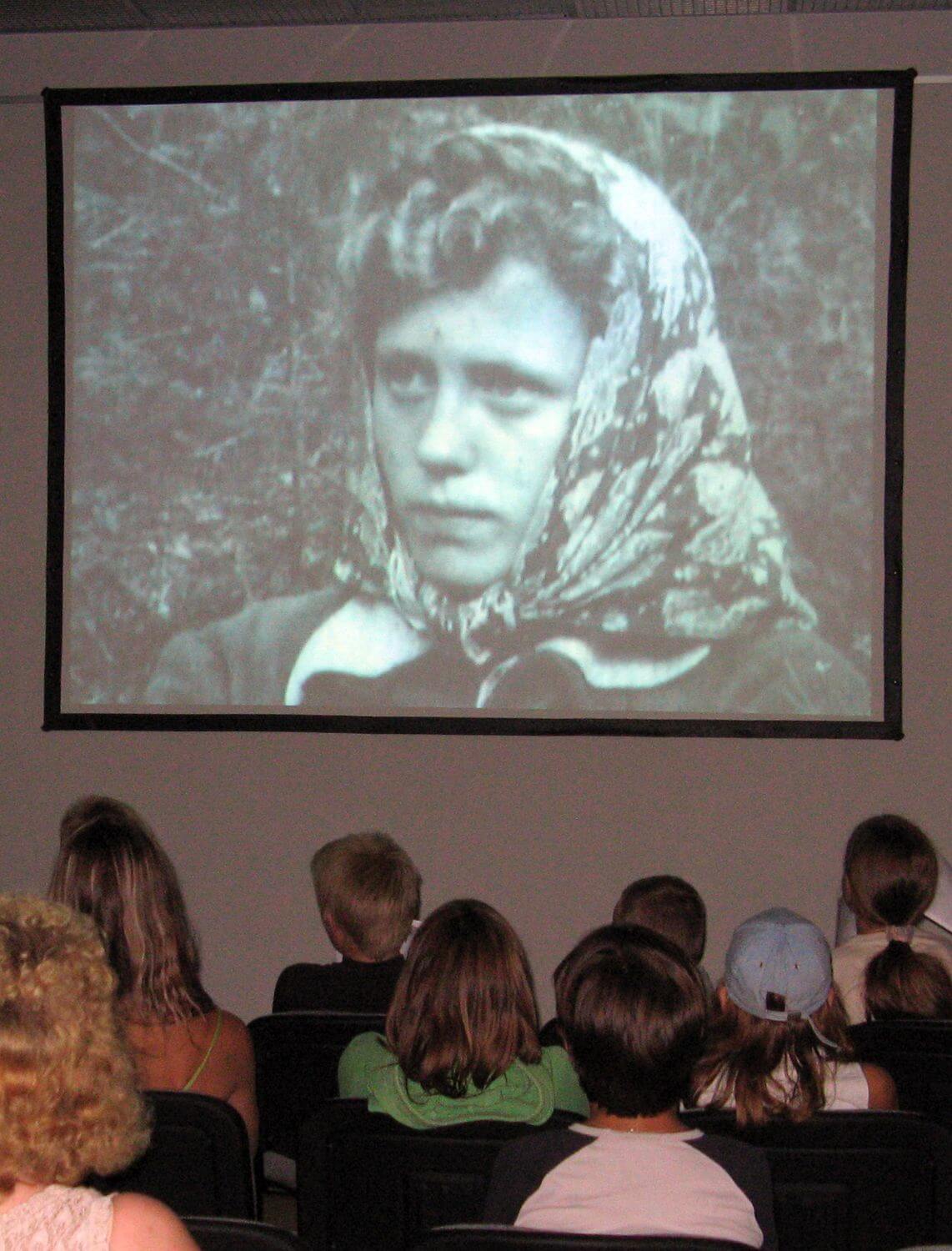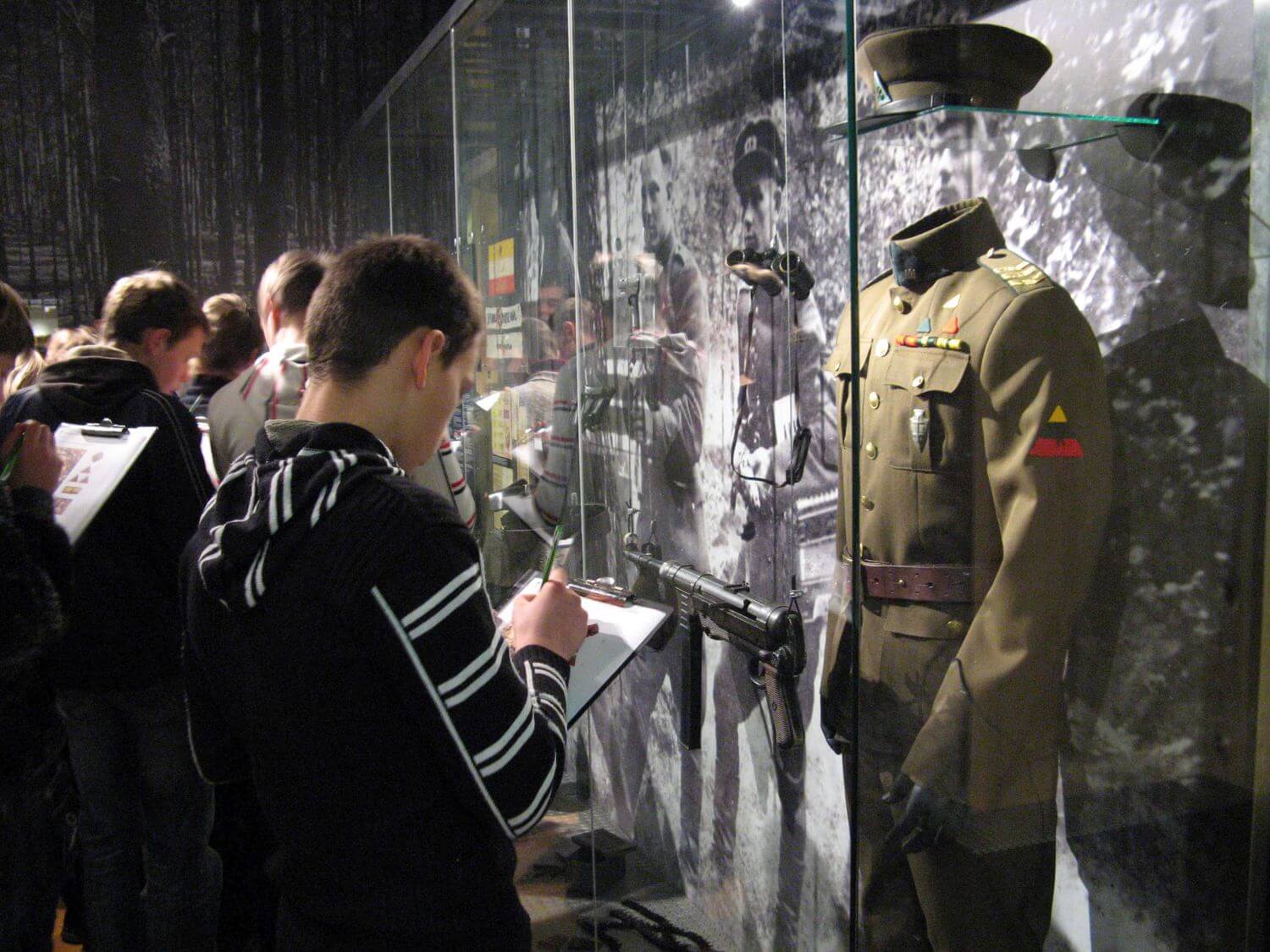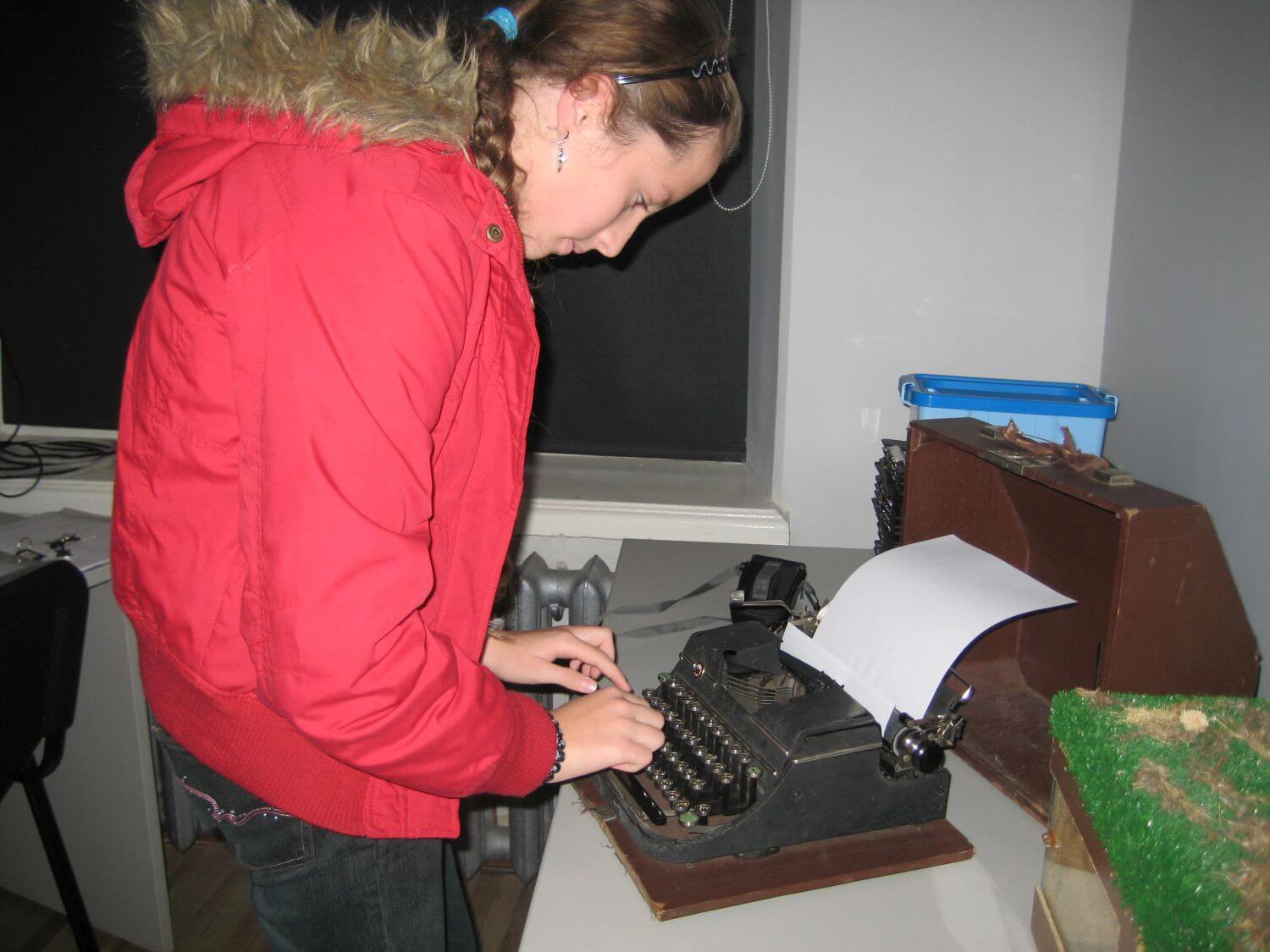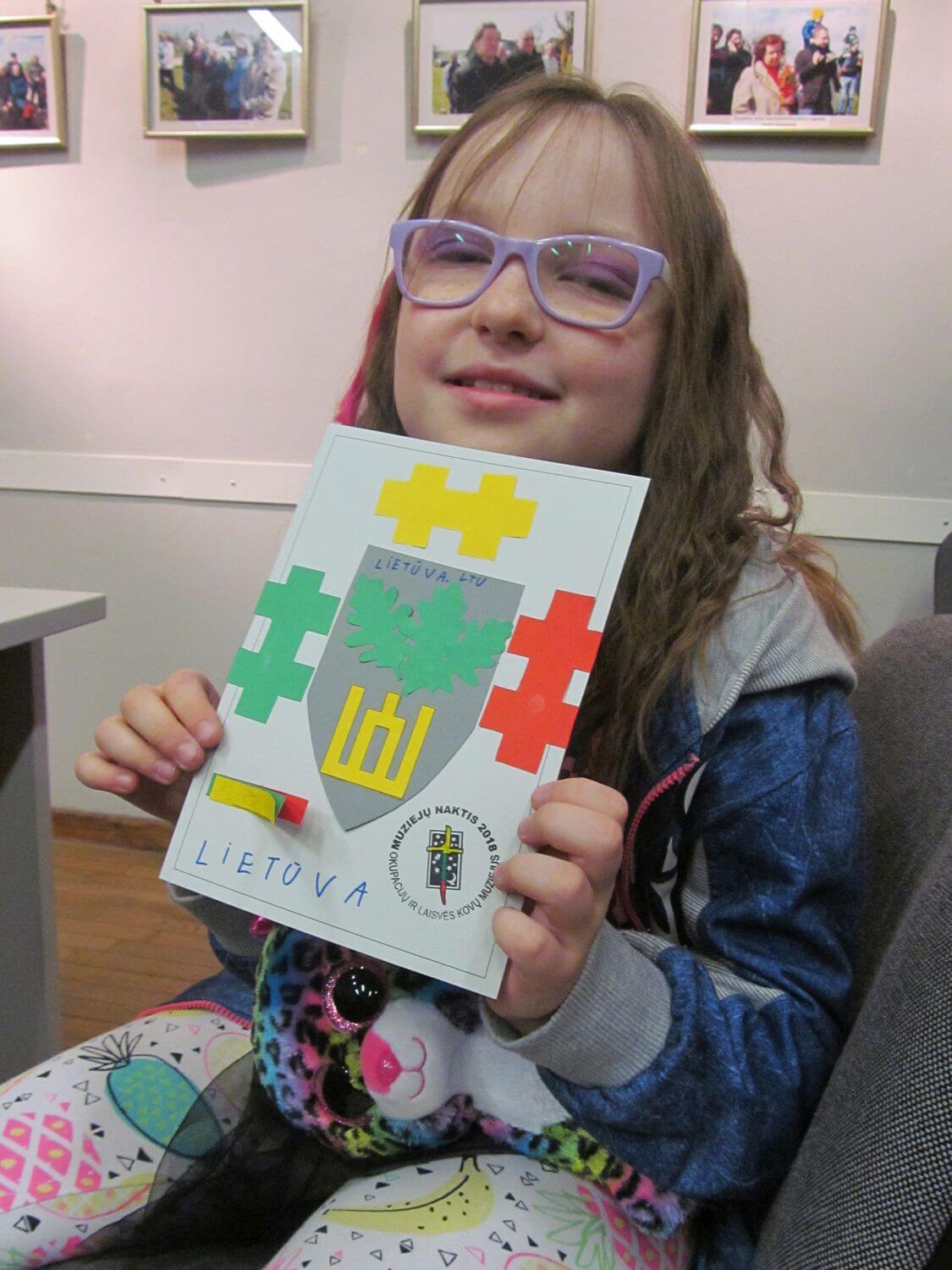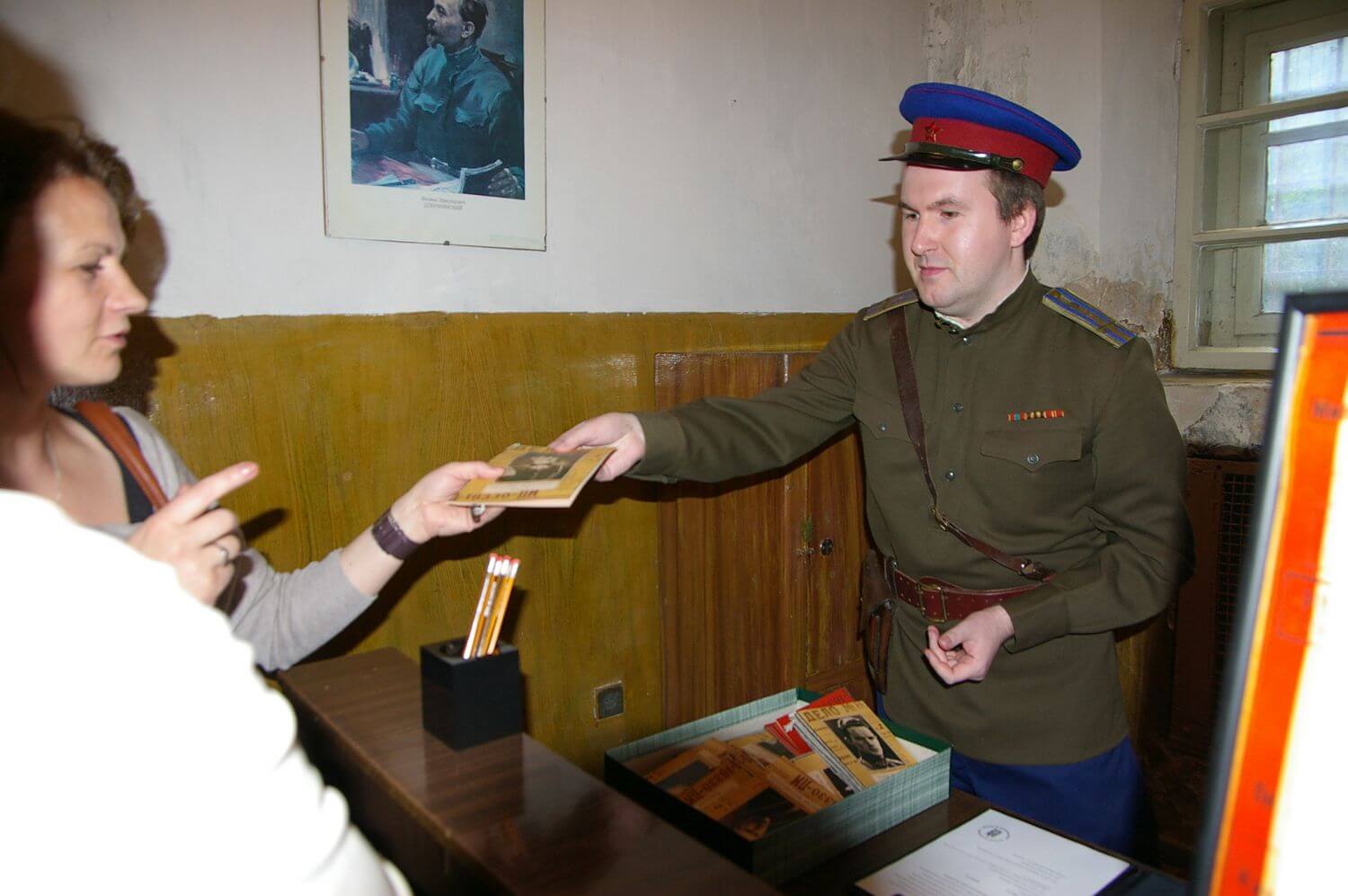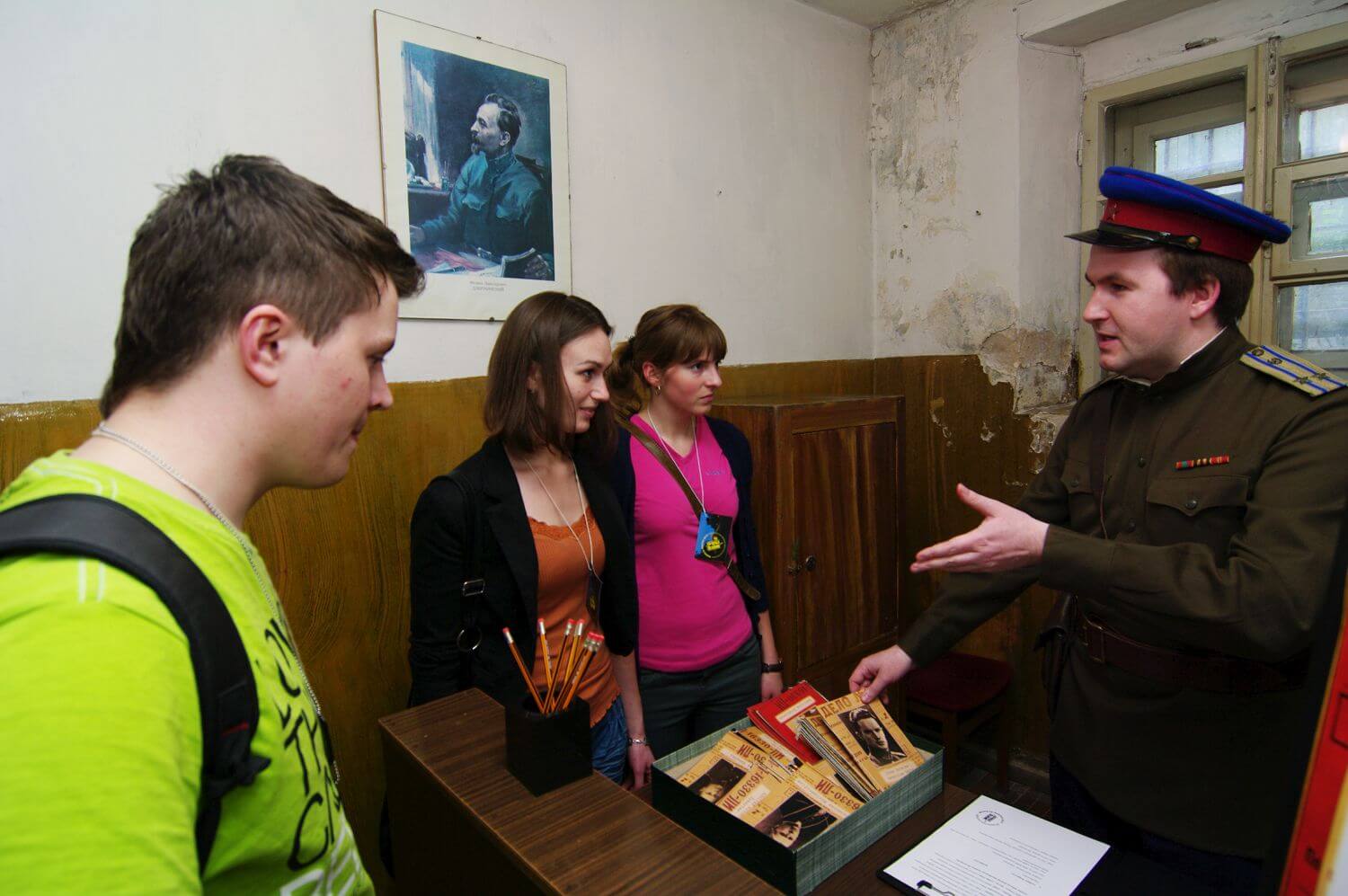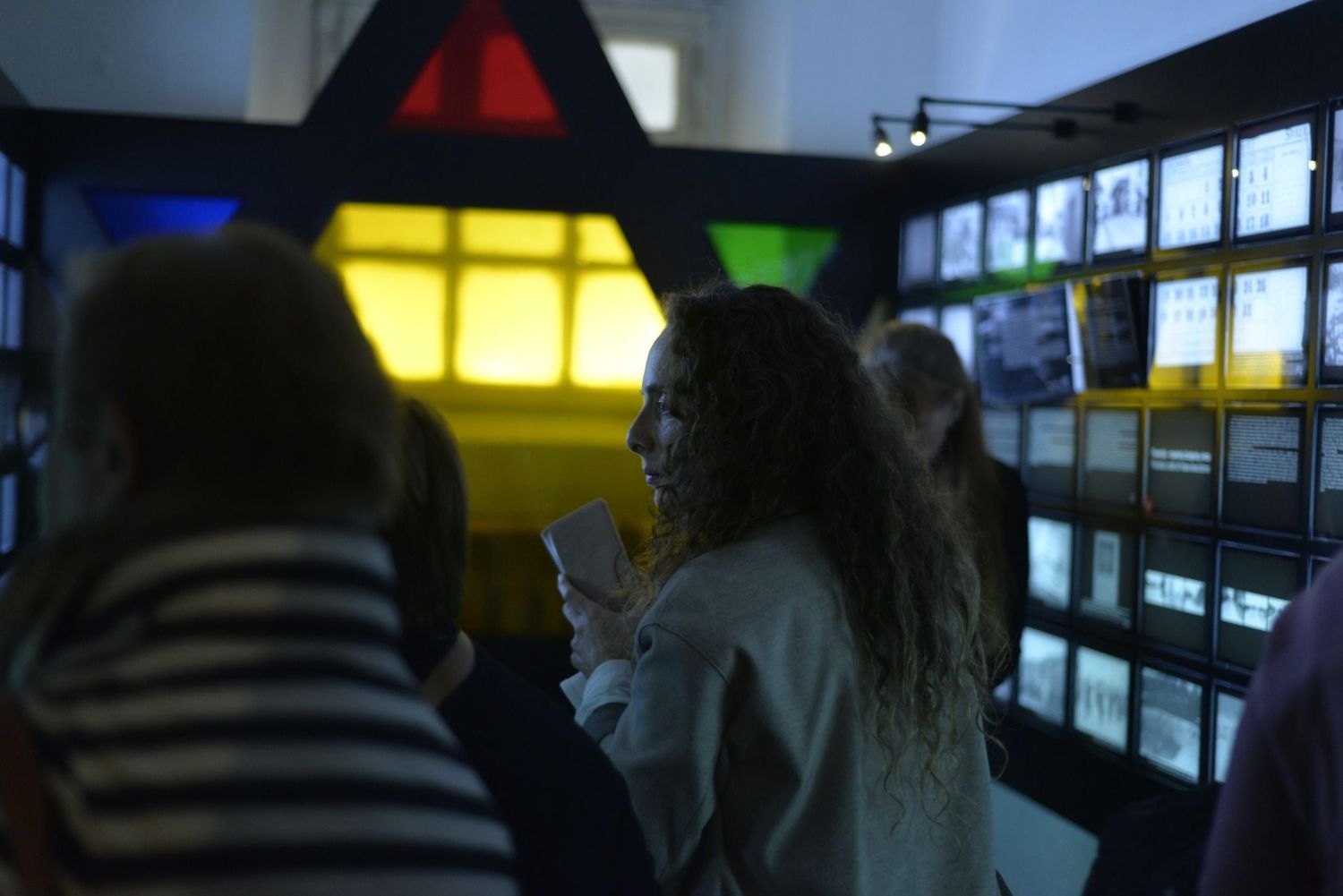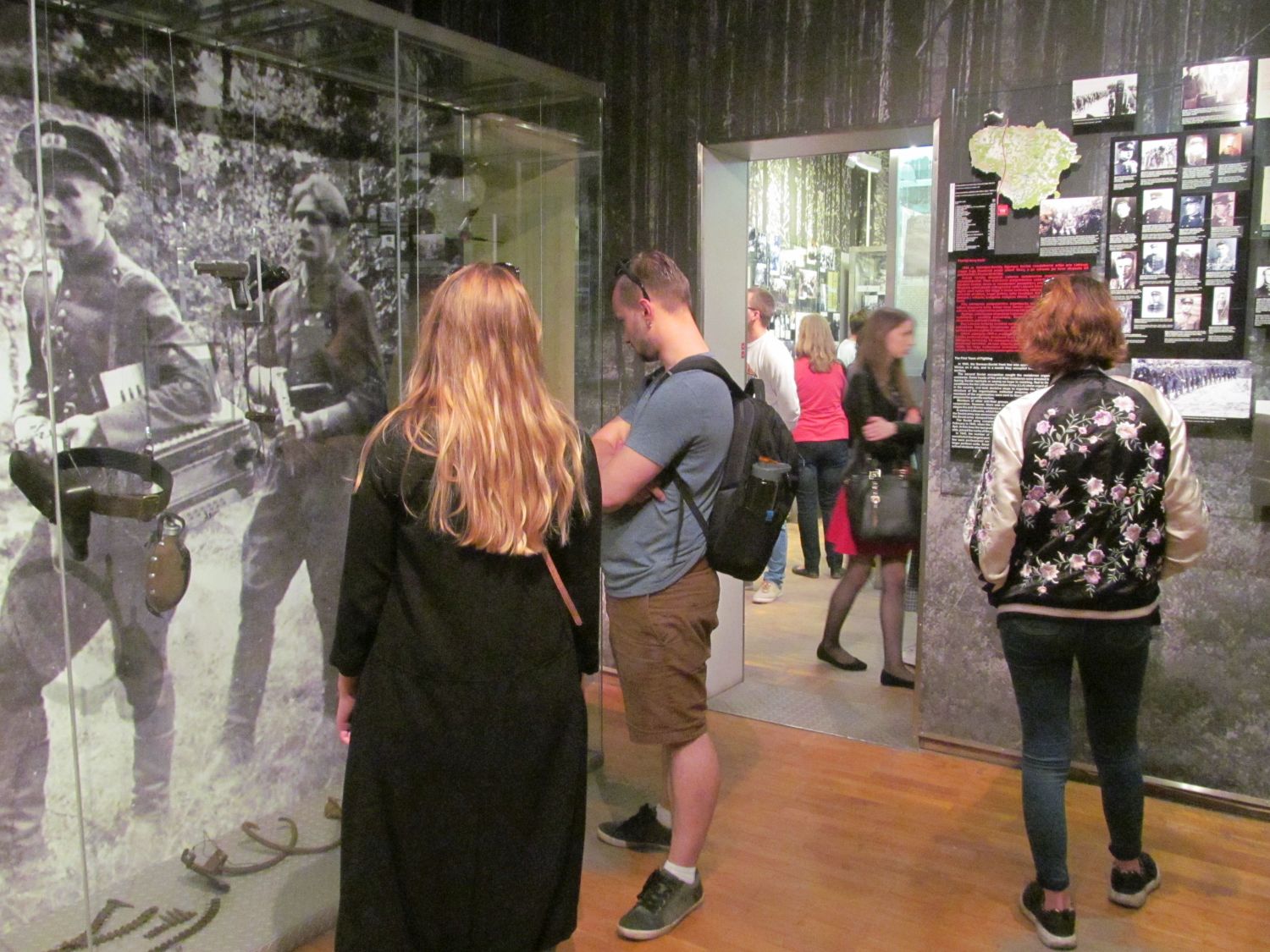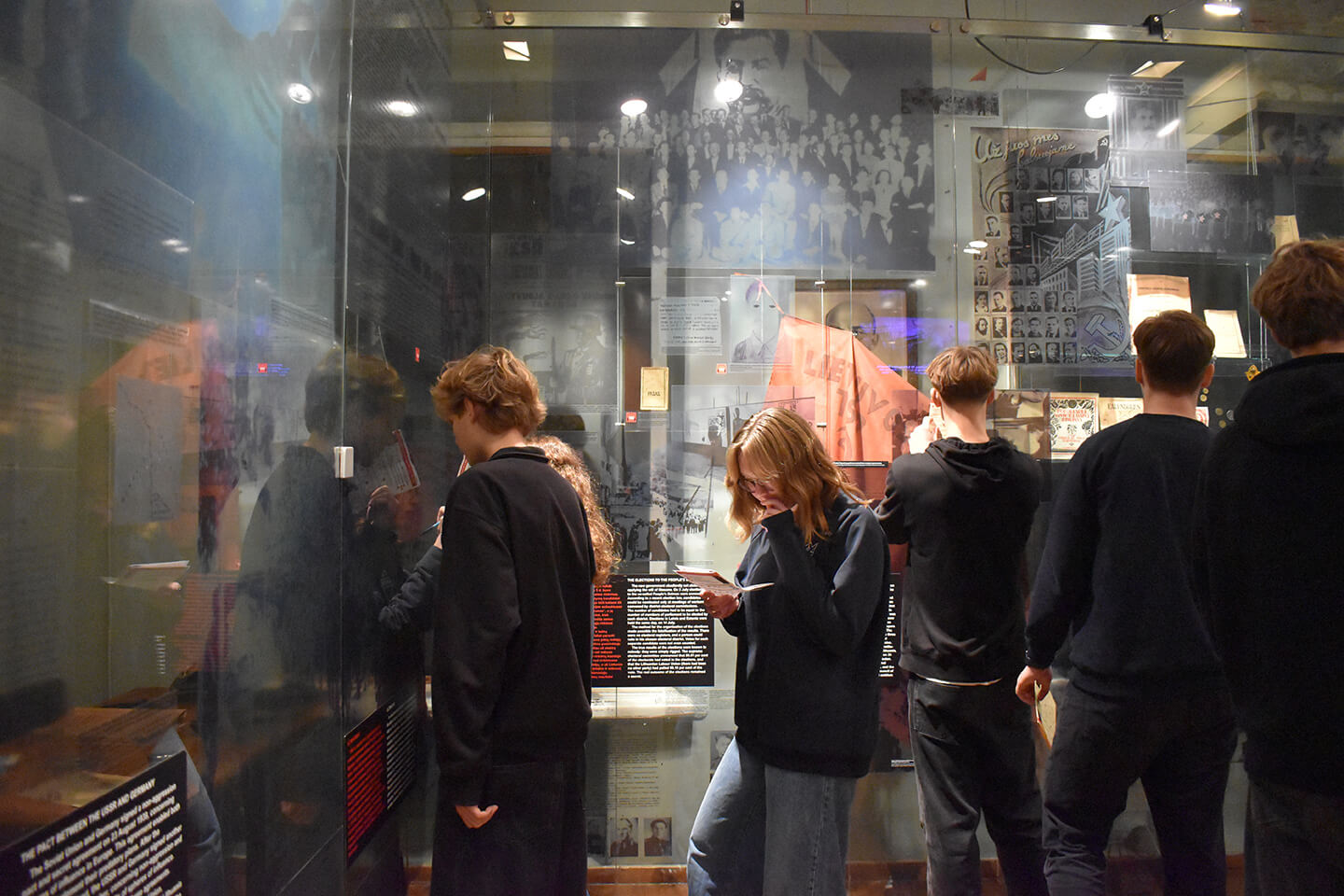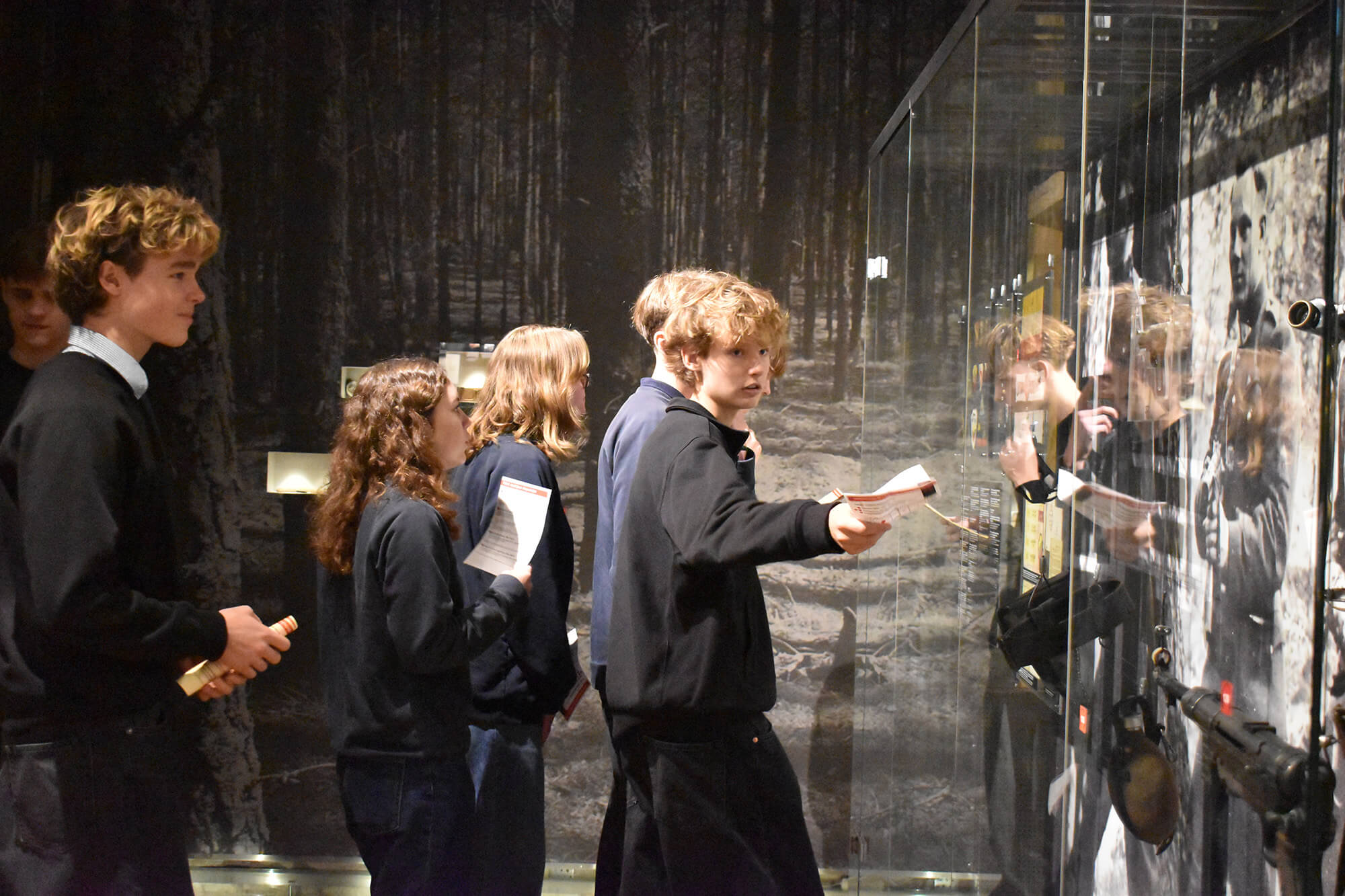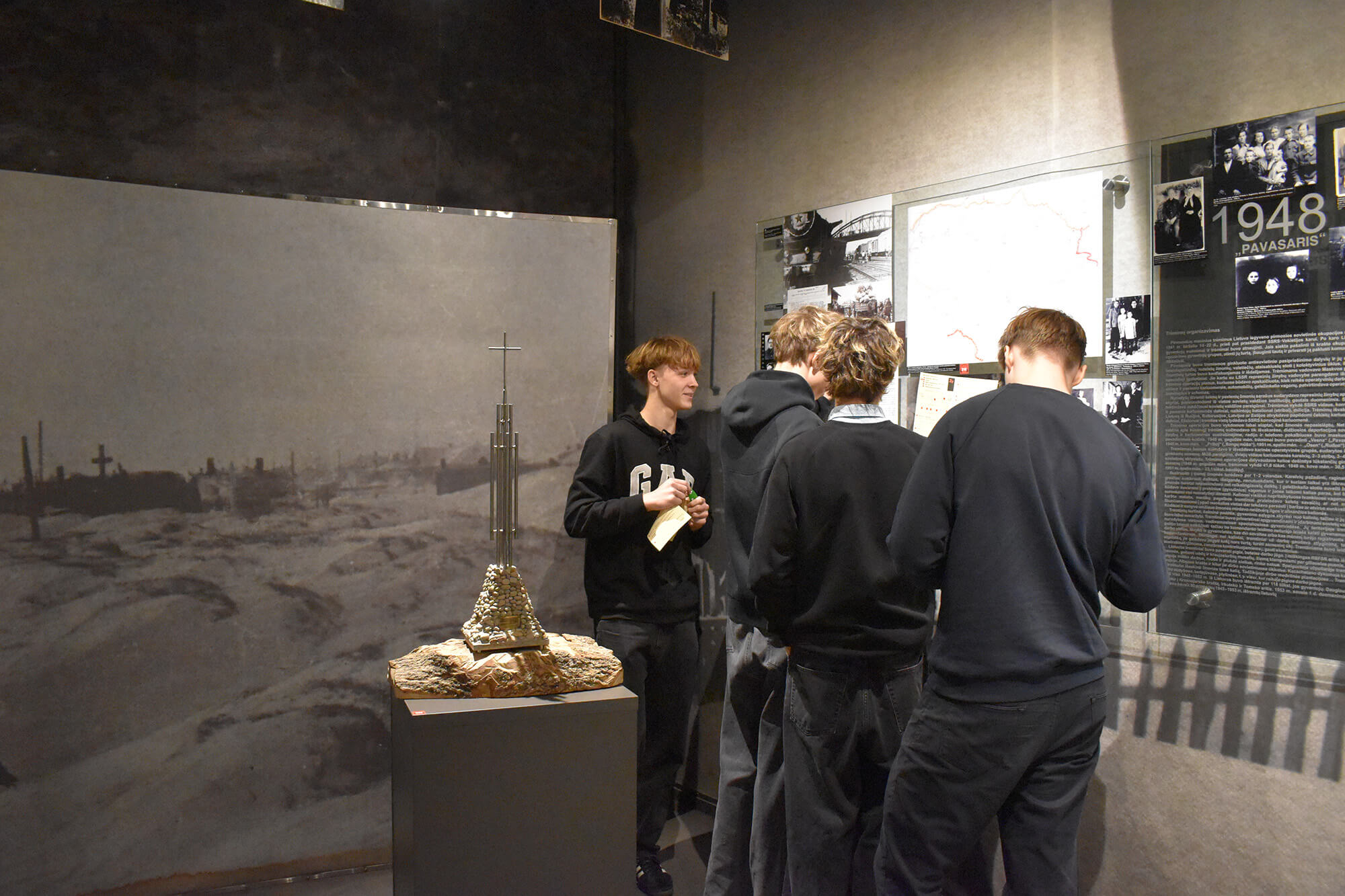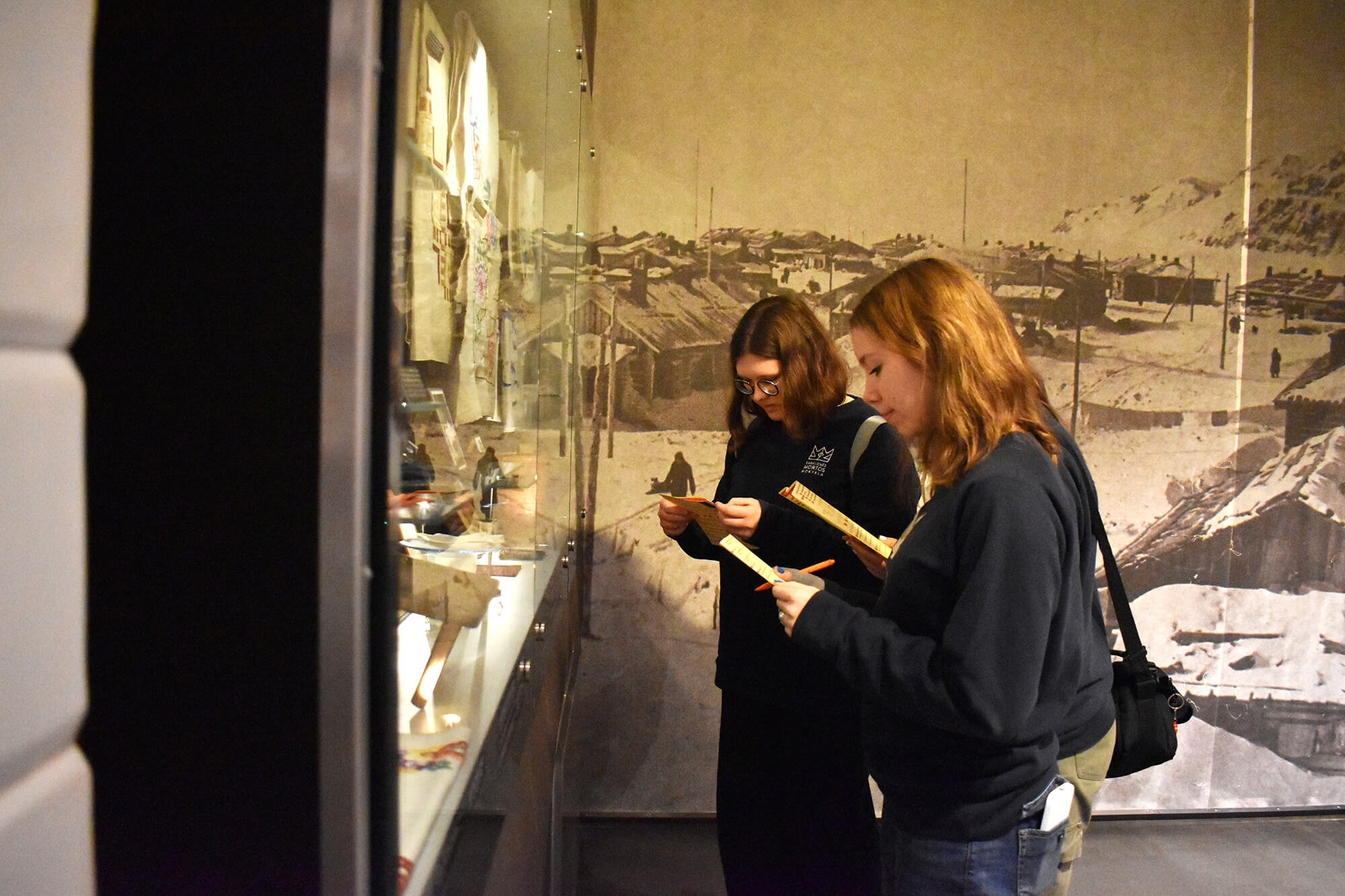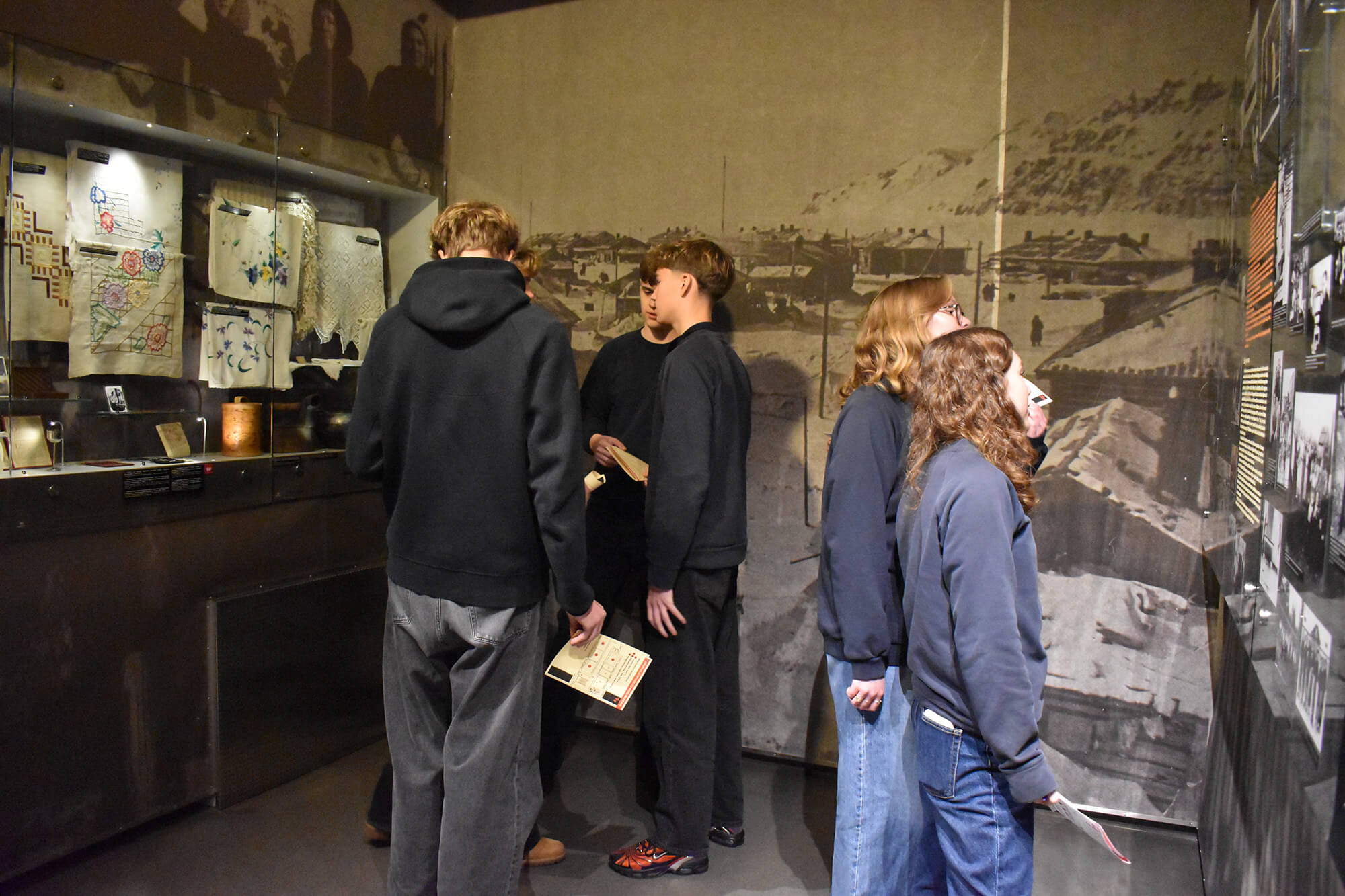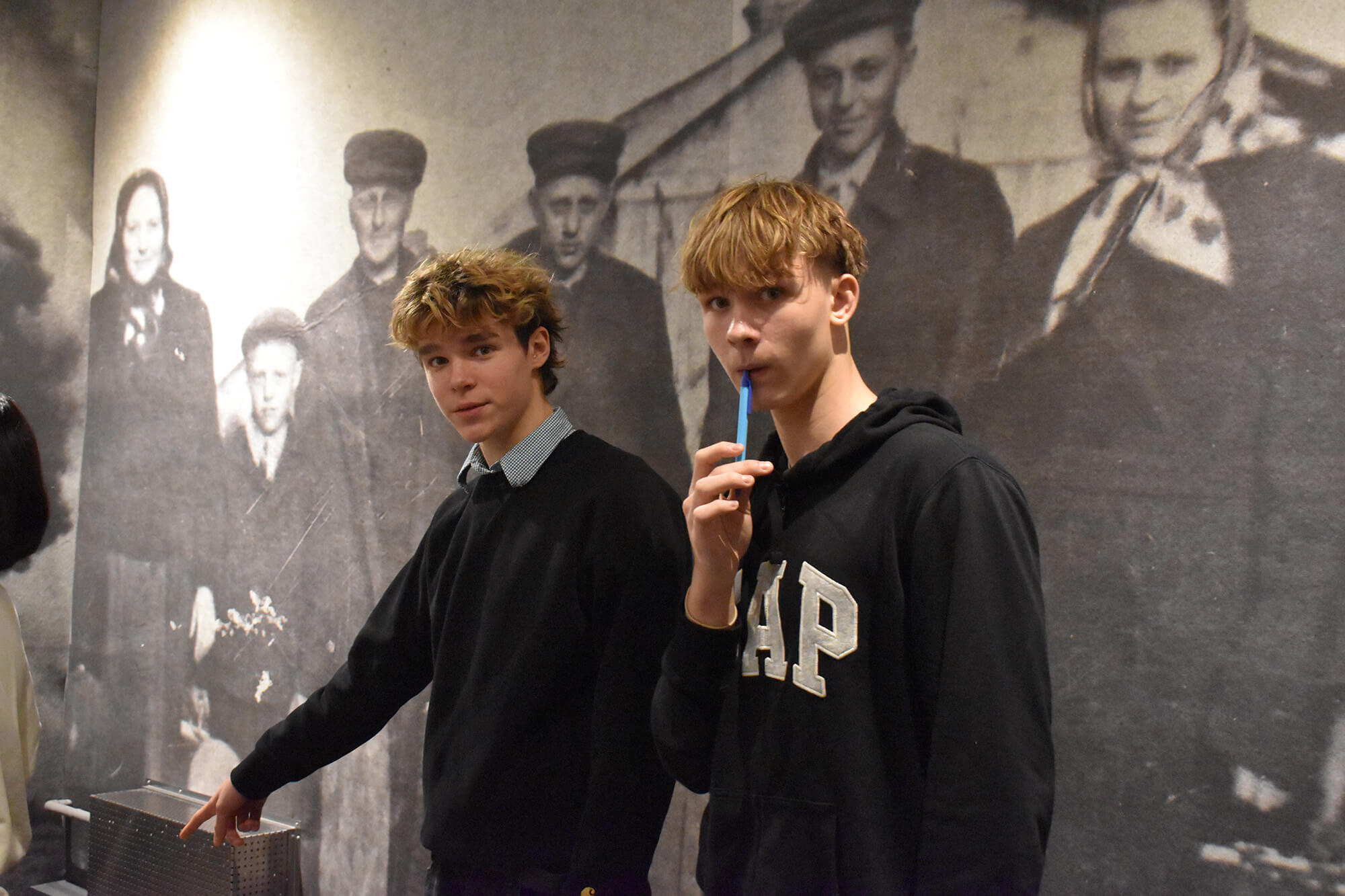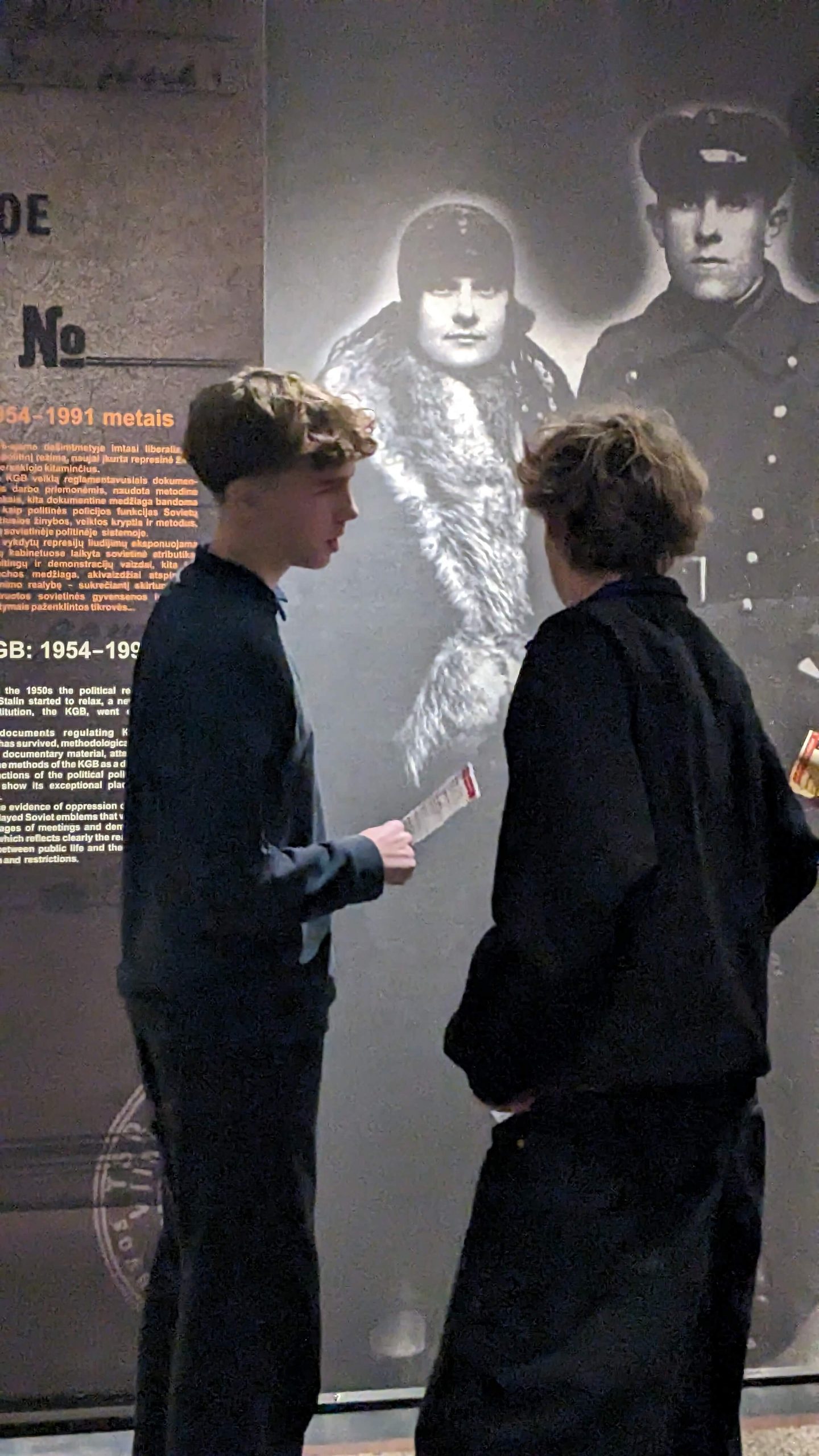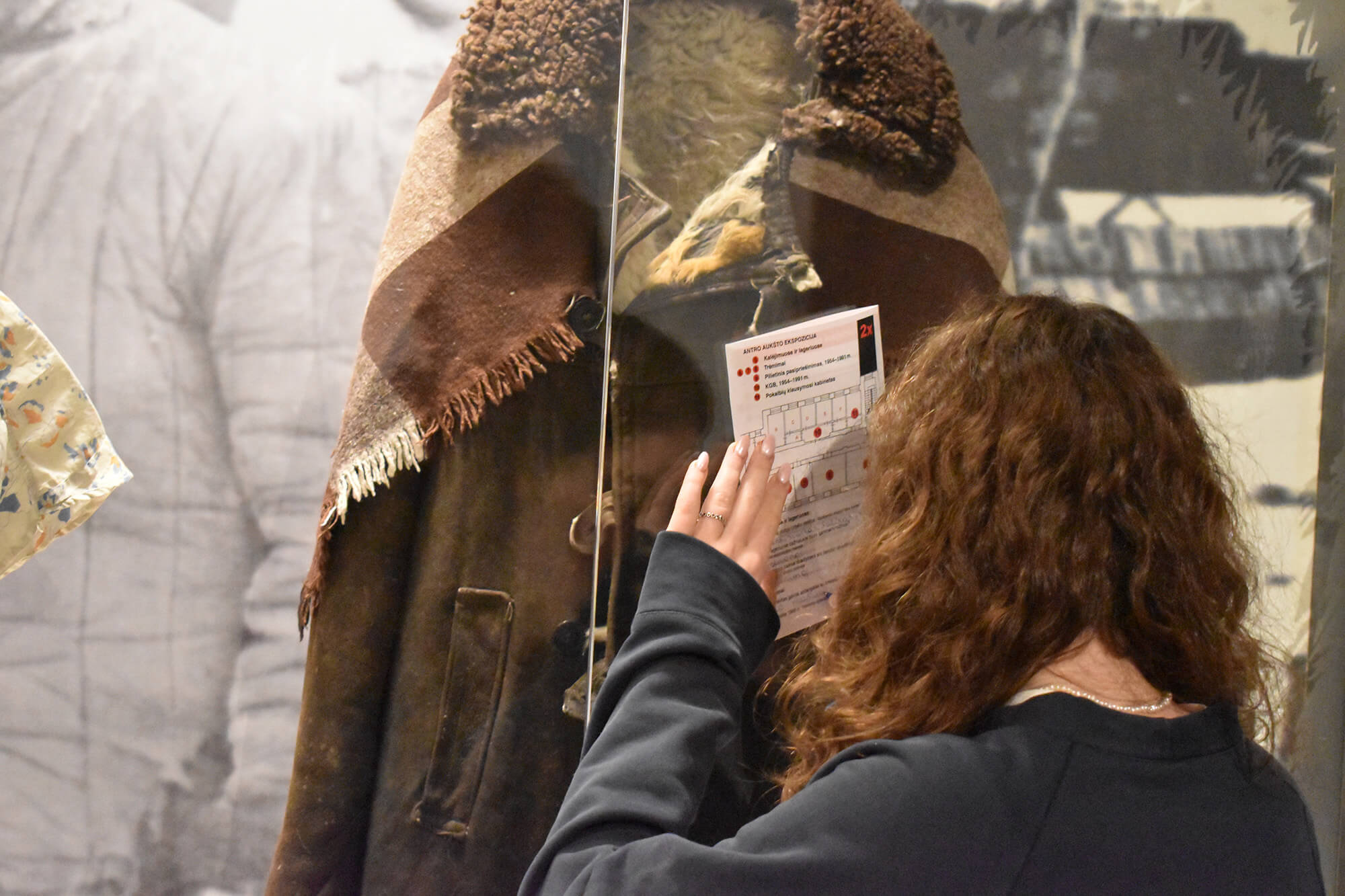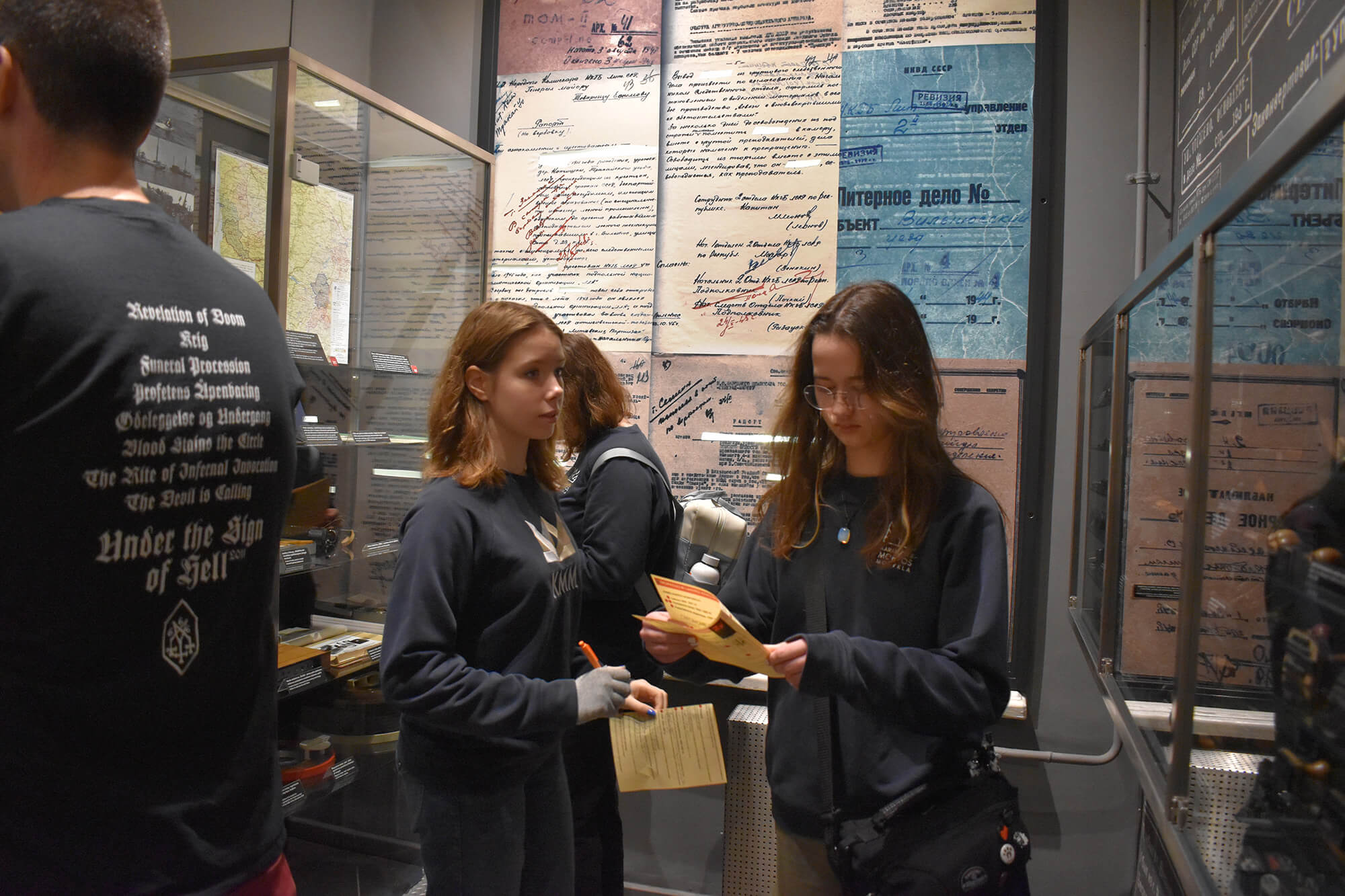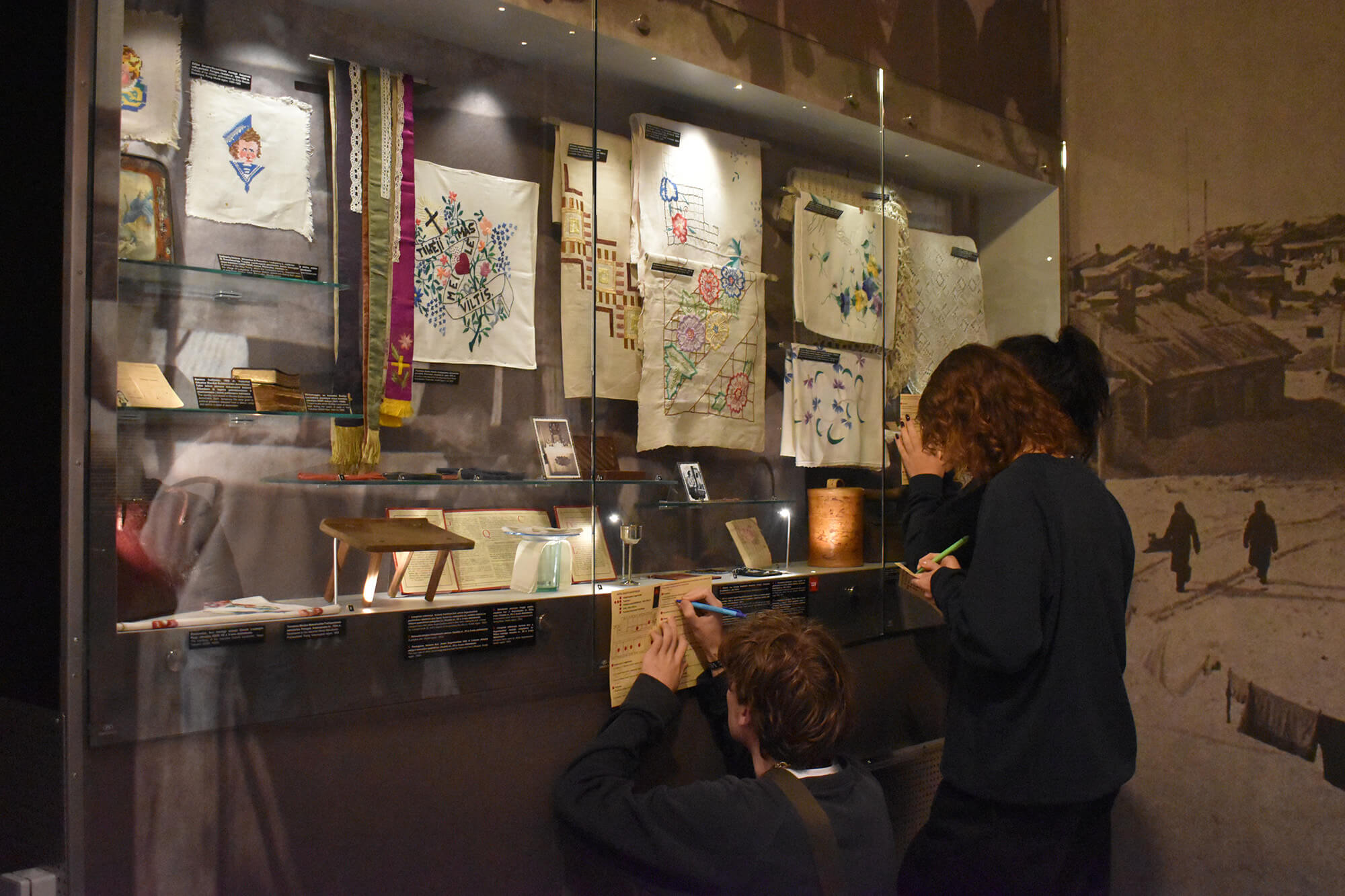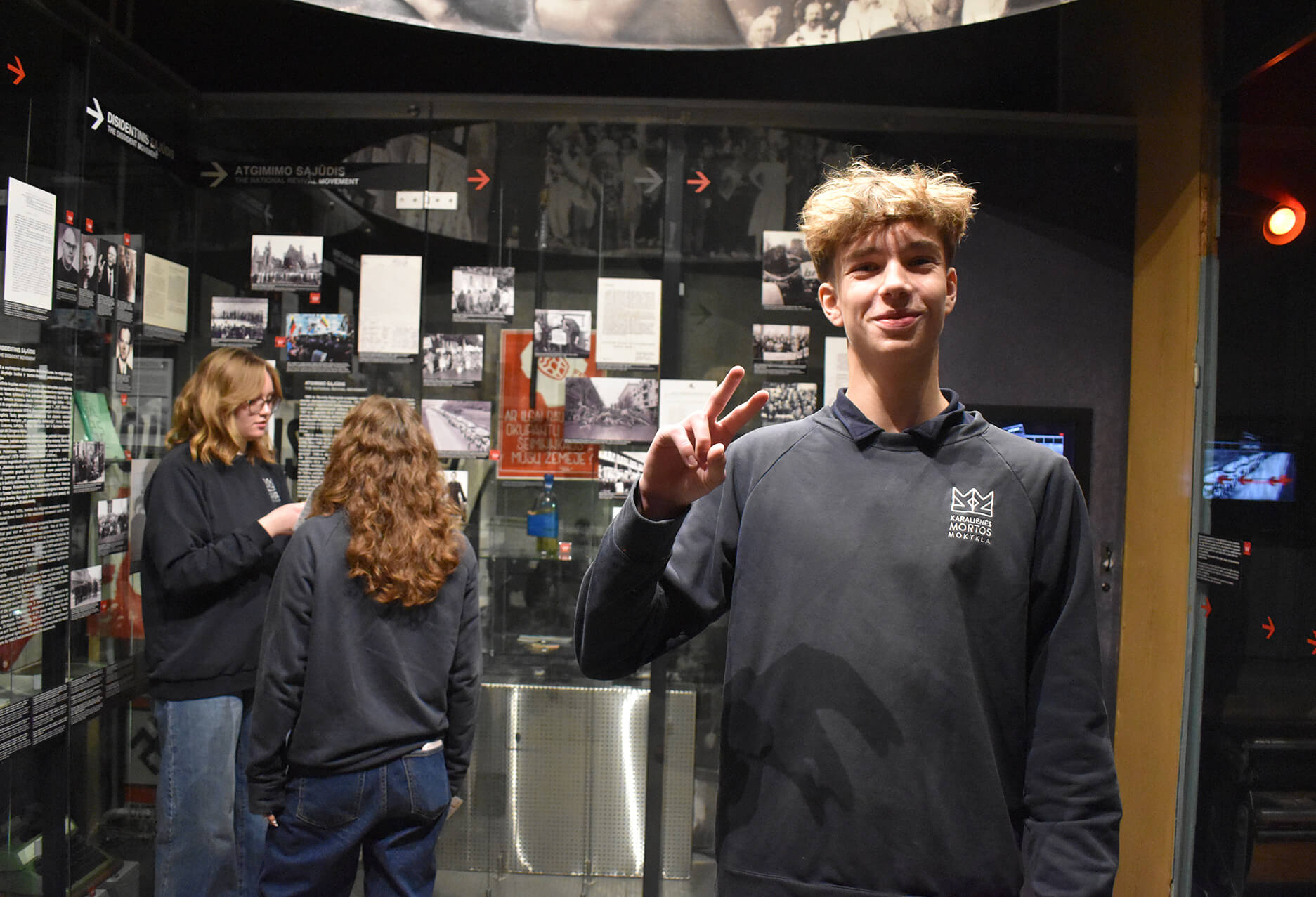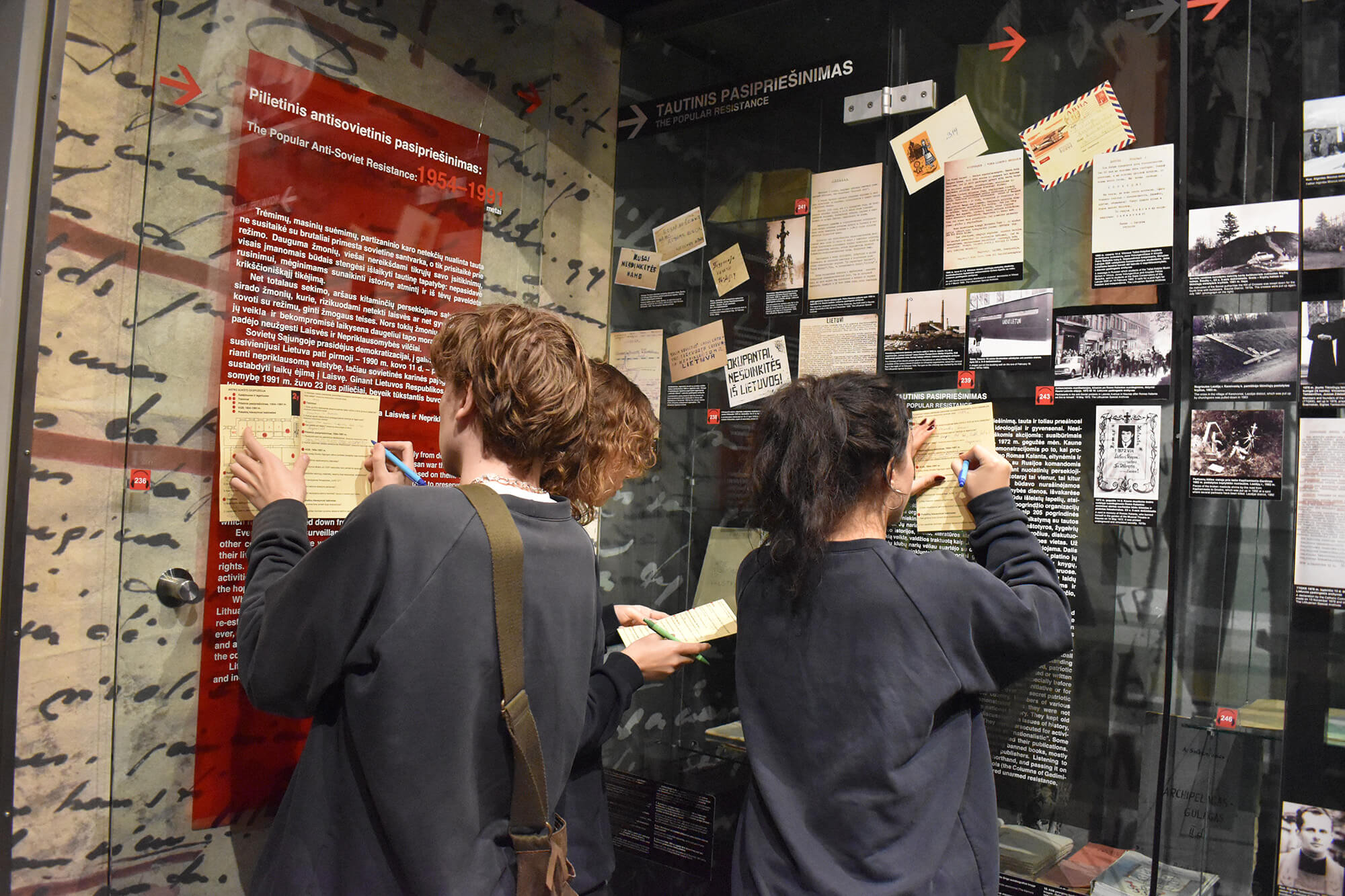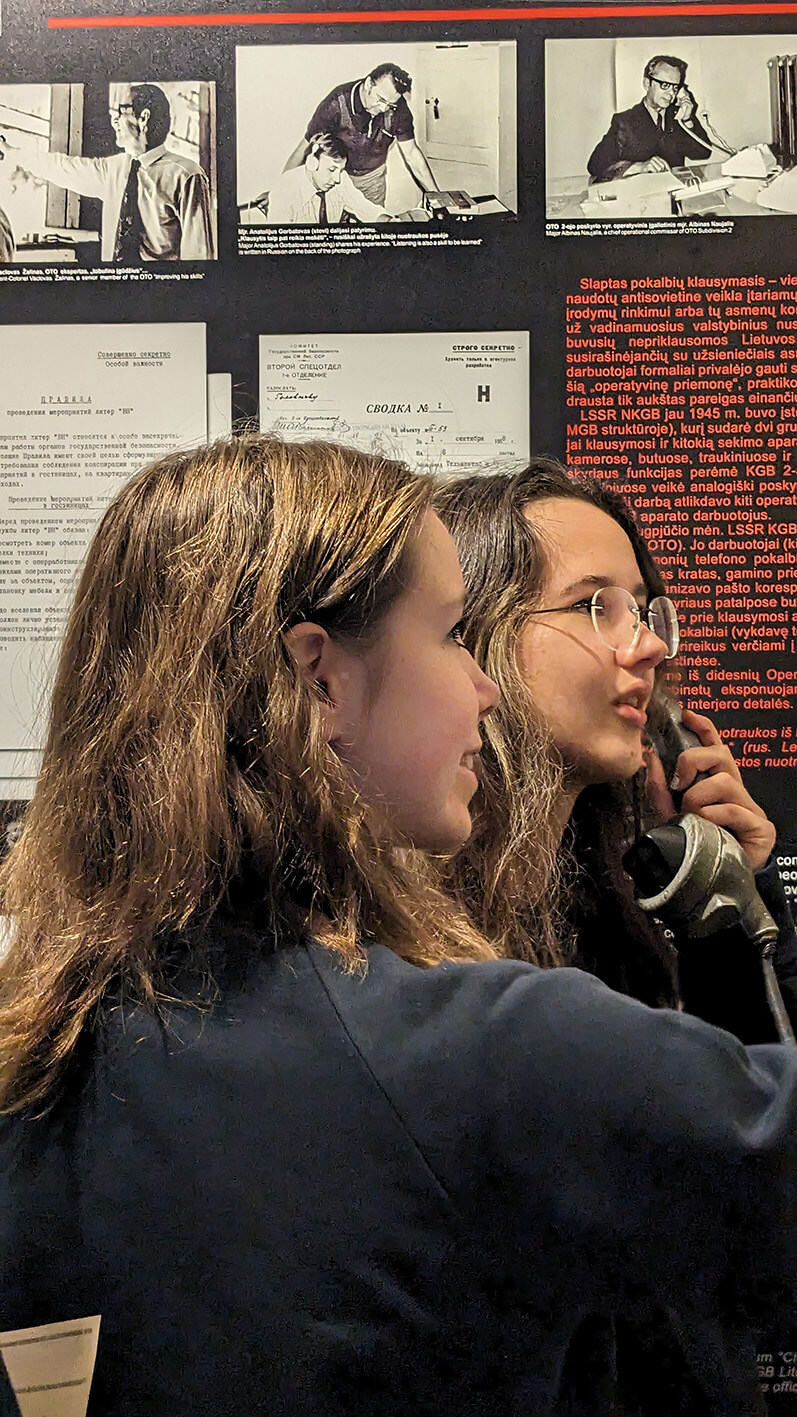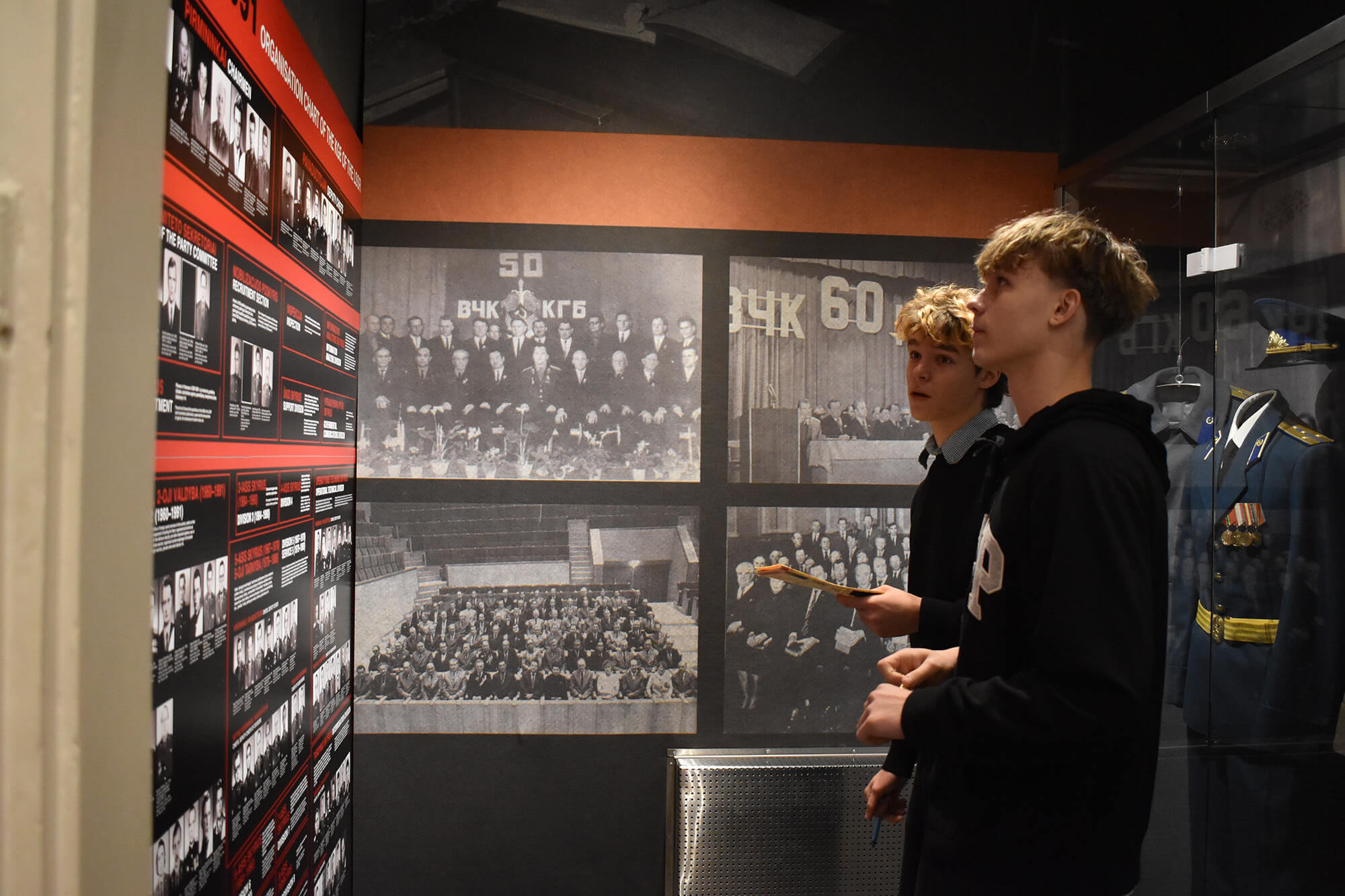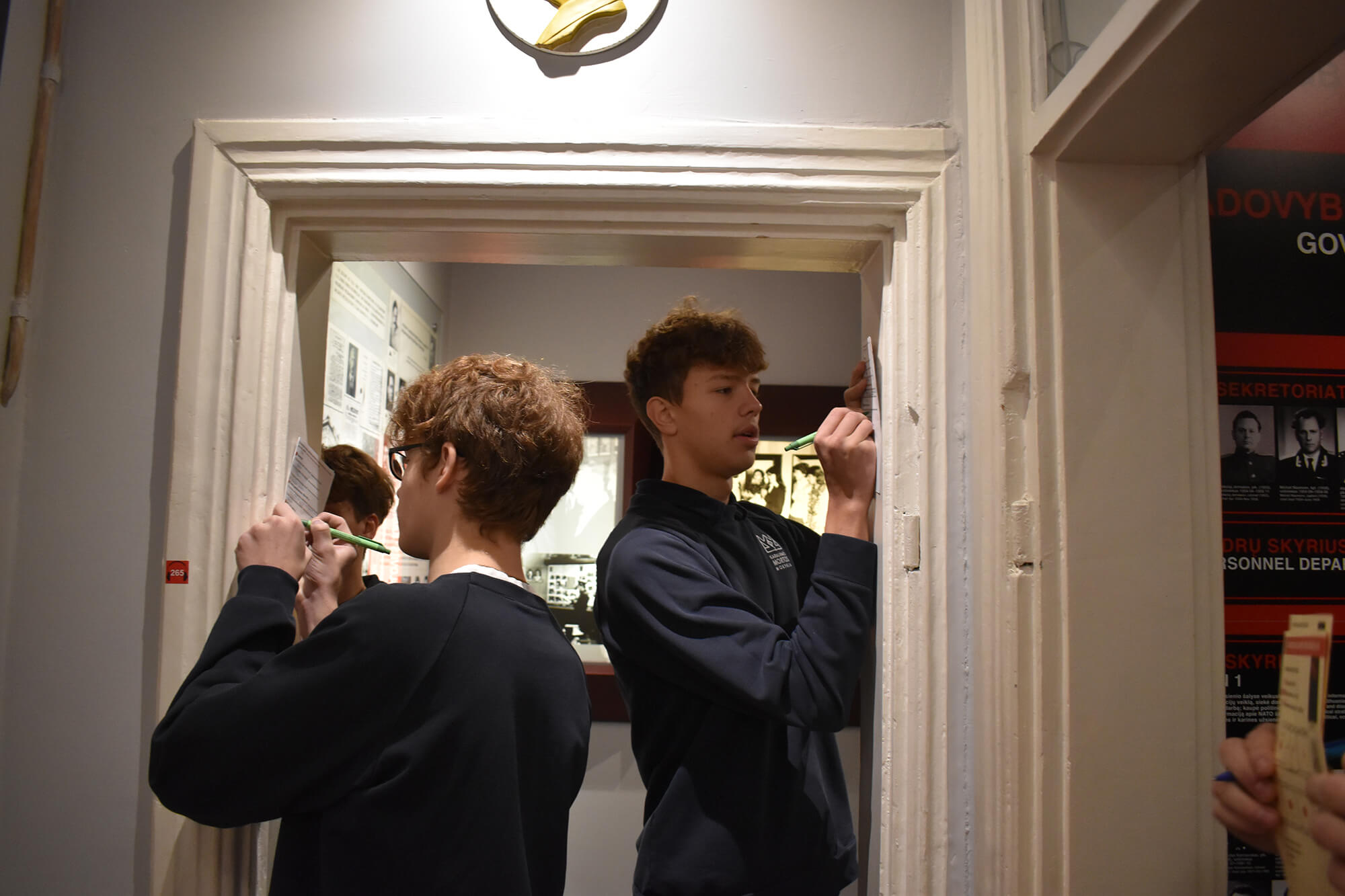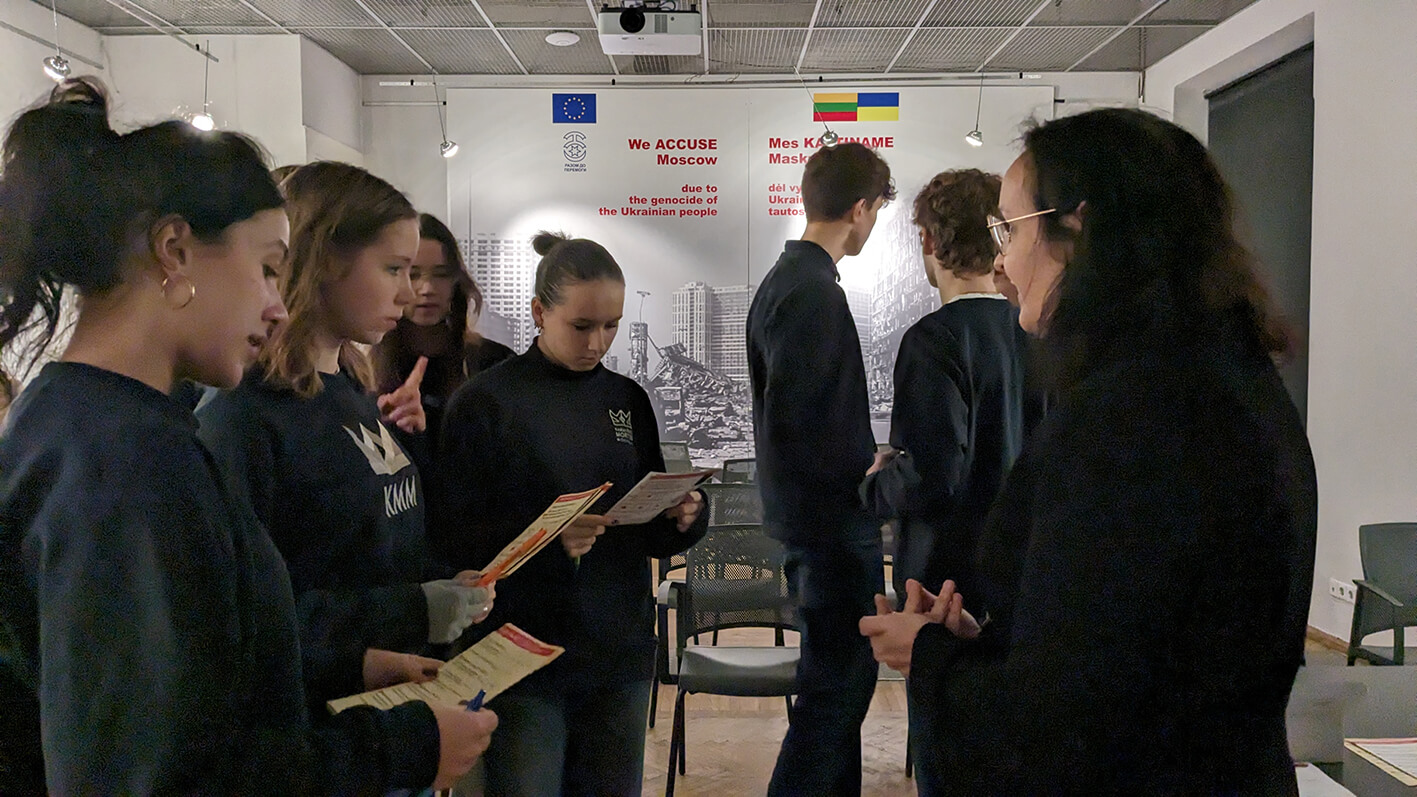Educational activities take place
From Wednesdays to Thursdays: 10:00-17:00
On Fridays: 10:00-16:00
Book educational activities
Soviet prisons, forced labour camps and exile: distinctive features
When the Soviet Union occupied Lithuania, almost 300,000 people were expelled from their homeland. Some of them were sent into exile, others to prisons and forced labour camps. How was life in exile different from life in a prison camp? Was there a difference between being imprisoned in a forced labour camp and being imprisoned in a prison? Students attending the educational session will find out the answers to these and other questions. The lesson is illustrated with a wealth of visual material. A discussion is organised at the end of the session.
Everyday life of freedom fighters: the fight for freedom and existence
The daily life of partisans is reflected in photographs, memoirs, and letters. The educational session looks at the more interesting aspects of the everyday life of Lithuanian freedom fighters. It covers bunkers, medical aid, partisan courts-martial, food, and respite. It also explains how the partisans celebrated religious and national holidays. A discussion is organised at the end of the session.
Children in exile
In 1941–1953, at least 39,000 children were deported to exile along with adults. The educational activity, based on visual material and recorded memories of contemporaries, attempts to shed light on their experiences and efforts to survive in exile. Participants can see and touch authentic objects of deportees; an age-appropriate discussion takes place.
Uprisings and strikes by political prisoners in Gulag camps
When the Soviet Union occupied Lithuania, almost 150,000 people were imprisoned in correctional labour camps or special regime camps. In both, inhuman conditions of imprisonment and the exploitation, humiliation and stigmatisation of political prisoners forced the prisoners to unite and resist the camp administration. Well-organised uprisings with specific demands to the camp administration and the highest leadership of the Soviet Union took place in Vorkuta, Norilsk, and Kengir. An educational session provides information about the main stages of these uprisings. A discussion takes place at the end of the session.
Escapes from places of detention and exile
Exiled from their homelands, imprisoned in prisons and forced labour camps, they wanted one thing – to return to Lithuania as soon as possible. For those who were determined to do so, many challenges awaited ahead that could not be foreseen in advance. During the educational session you will find out what the reasons were for attempted escapes, who decided to escape, what obstacles had to be overcome while escaping, what was waiting the escapees if they were recaptured by Soviet security officers and whether there were any successful escape stories. A discussion takes place at the end of the session.
Partisan military organisation: 1944-1953
Already in the summer of 1944, Lithuanian men – armed and unarmed – took to the forests and swore an oath to become partisans. During the educational session, pupils are introduced to the stages of partisan warfare and its distinctive features. The creation of the Lithuanian partisan structure – areas, districts, and units – is discussed and a brief introduction about the partisan leadership is made. The partisan uniform and insignia are presented. A discussion takes place at the end of the session.
Geography of places of exile and detention in the Soviet Union
One of the aims of deportations and imprisonment in forced labour camps was to provide labour to remote, sparsely populated,or uninhabited areas of the Soviet Union. Hundreds or even thousands of kilometres apart, the natural and living conditions, as well as the work that Lithuanian prisoners and deportees had to do, were very different. The session ends with a discussion.
Lithuanian clergy in Soviet labour camps and exile
During the occupation, some Lithuanian citizens were exiled and imprisoned in Soviet labour camps. Around 20% of the clergy were repressed along with them. The educational session, based on stories and rare and interesting photographs, reveals how, in spite of prohibitions and restrictions, Lithuanian Catholic priests carried out their pastoral activities far away from Lithuania. In this way, they uplifted the spirit of their friends and helped them to survive and endure the hardships of captivity. A discussion takes place at the end of the session.
We were searching for light in a kingdom of darkness
The session tells how the Lithuanian deportees and prisoners tried to maintain their human dignity, not to lose their Christian faith, their national self-awareness, and their willingness to learn while being far from their homeland. The deportees secretly taught children the Lithuanian language, Lithuanian history, geography, and other subjects. The young people in secret groups released small poetry and prose publications. At the risk of being sent to the penitentiary or punishment isolation cells, prisoners of labour camps gathered around their more educated friends to discuss political issues, learn foreign languages, write poems, and paint. After Stalin’s death, the regime relaxed and sports and cultural activities in the camps and in exile intensified. Basketball, football, and volleyball teams were formed, as well as choirs and instrumental ensembles. Many deportees were able to study in their free time – to continue their secondary school education, which had been interrupted by the exile, and to take advantage of the opportunity to study at higher and post-secondary schools after Stalin’s death. Neither hard physical work nor fatigue could dampen people’s faith in the power of knowledge and art. The session is illustrated with a wealth of visual material. A discussion takes place at the end of the session.
Quiz
Student, if you want to learn more about the Lithuanian partisans and their fight for freedom, about the exile settlements and labour camps in the remote regions of Siberia, about escapes from the camps and places of exile, about the uprisings and strikes that took place behind the barbed fences of the camps, come to the Museum of the Occupations and Freedom Fights and take part in the Quiz – hear a question, find the answer and win a prize!
Learn about the museum exhibitions
Do you want to learn about the museum exhibitions without the help of a museum guide? Then grab a question sheet and start looking for answers! This educational activity gives visitors an opportunity to explore the museum’s exhibition halls on their own and learn about the unique exhibits in them, find out new and interesting facts about exceptional people, take note of important historical objects, make unexpected decisions, and experience the joy of discovery.



